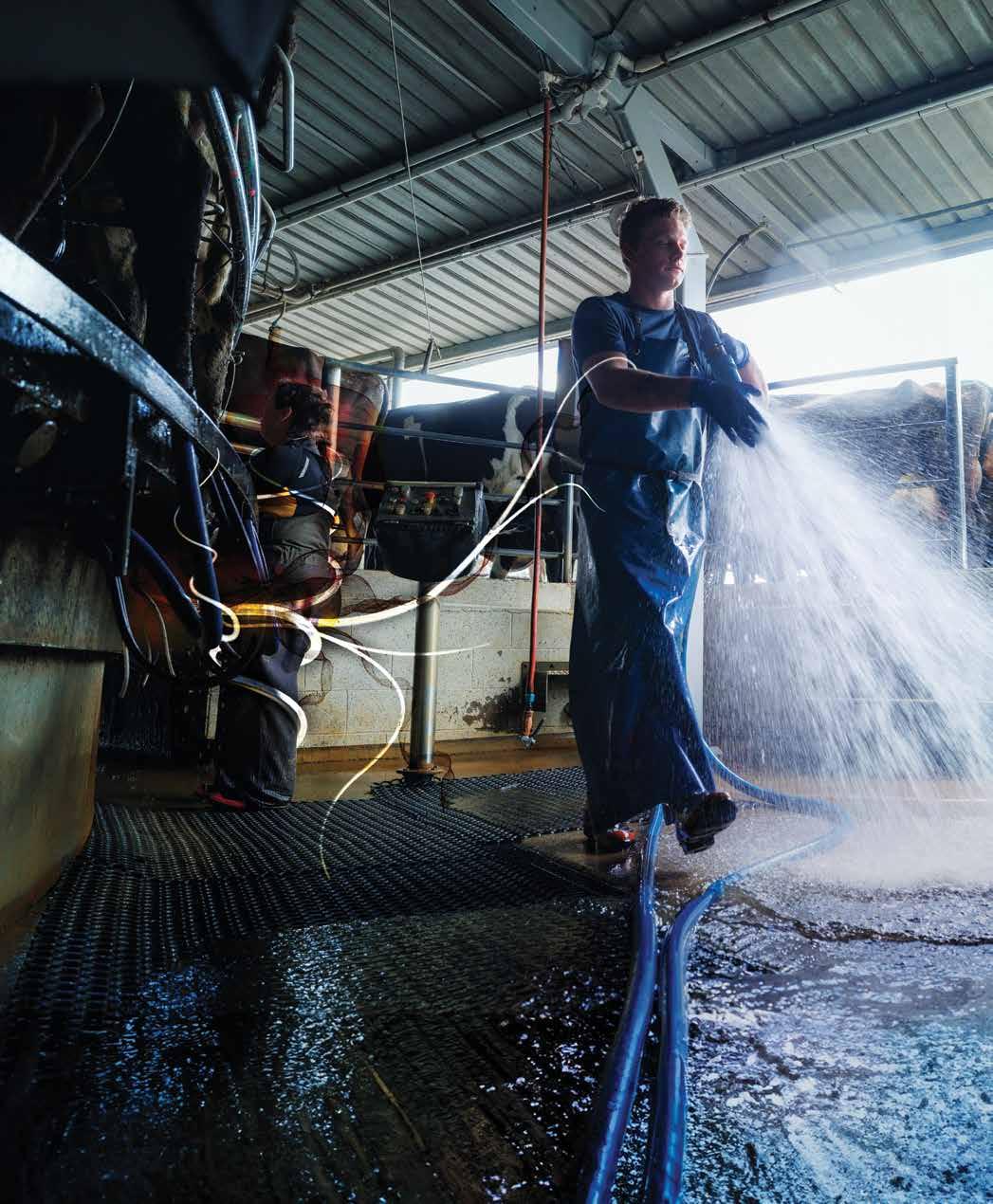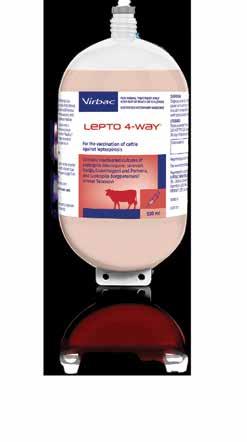Drought impact lingers on in Naki. PAGE 8

NATIONAL
Tapping into Aussie genetics
Page 20
Hooked on CanAm
Page 27


Drought impact lingers on in Naki. PAGE 8

NATIONAL
Tapping into Aussie genetics
Page 20
Hooked on CanAm
Page 27

Fonterra Co-operative Council chair John Stevenson says that there is a lot of confidence among farmers right now. PAGE 3
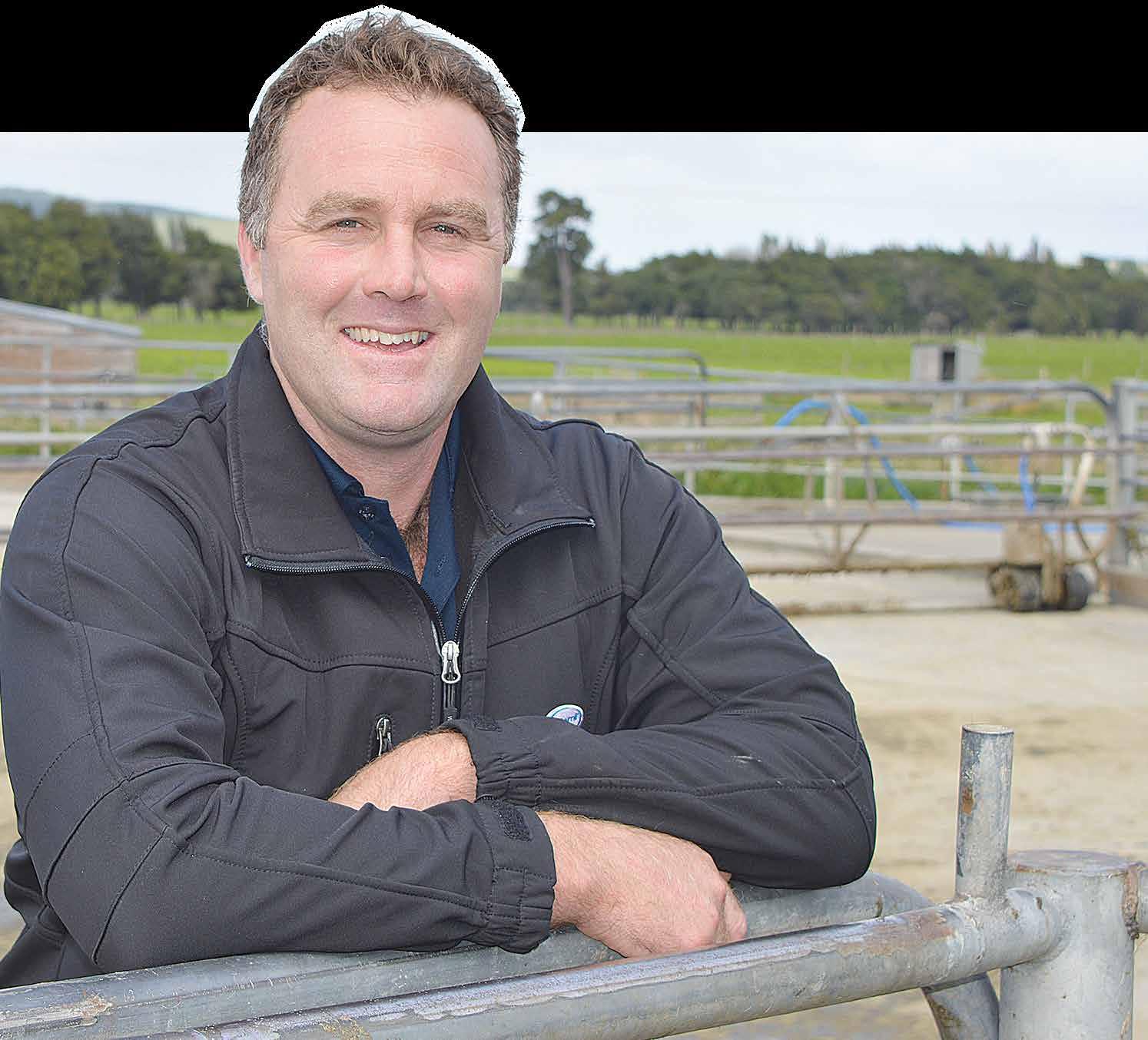
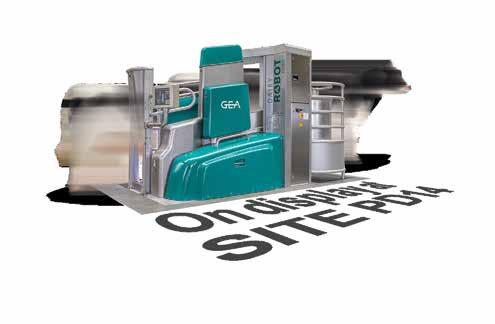
redefining the milking experience
Combining innovative automatic milking technology with true pasture-based farming. For the first time ever in New Zealand, this Fieldays®, GEA is proud to showcase the DairyRobot at site PD14.
Trusted by farmers for effective worm control with NIL MILK withholding periods and improved R.O.I
Studies in NZ dairy cows have shown the potent effects of EPRINEX® on parasites resulted in more daily milk, more milk protein and more milk solids.1,2

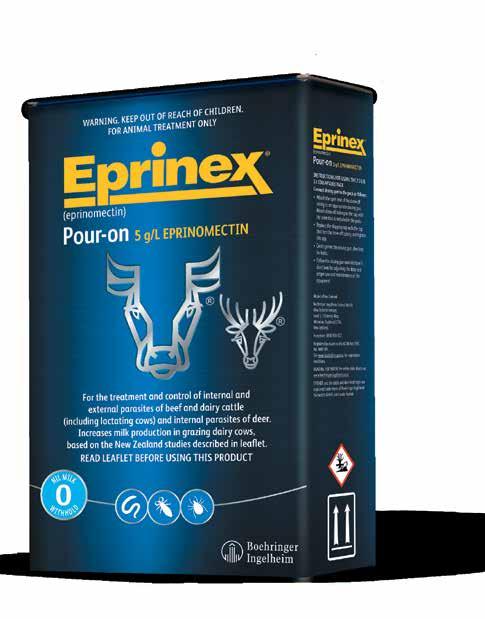
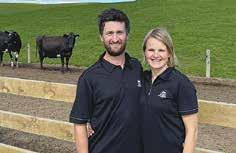


SUDESH KISSUN sudeshk@ruralnews.co.nz
THE 2025-26 season is set to start on a high and a $10/kgMS opening forecast milk price isn’t being ruled out.
Fonterra will unveil its opening forecast milk price for the new season on Thursday (May 29th) and economists believe that some of the factors constraining global dairy supply are likely to be persistent –like environmental constraints in Europe and significant profitability challenges for China’s dairy farmers.
ANZ is forecasting a $10/kgMS opening forecast milk price while ASB is settling for $9.75/kgMS. The new season kicks off June 1.
Fonterra Co-operative Council chair John Stevenson says feedback to Council shows that there is a lot of confidence among Fonterra farmers right now.
Stevenson says a high advance rate on a good forecast milk price this season has allowed many to pay down debt and catch up on deferred maintenance and plant replacement.
“Farmers have told us that they are keen to see a strong opening forecast for the new season as they look to lock in some feed costs and plan future debt repayment and expenditure,” he told Dairy News
However, he says farmers will be aware that a lot can change in global markets during a season, so there may be some caution until there is
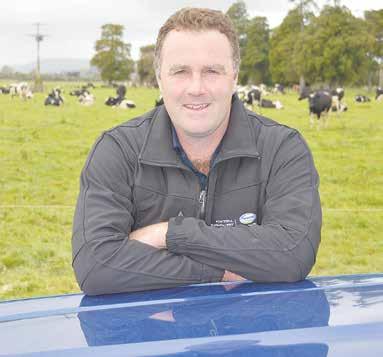
more certainty around where any final milk price may land.
Stevenson says the Fonterra board will ultimately make the decision on the opening milk price.
ANZ chief economist Sharon Zollner says looking towards next season, the starting point for global dairy prices is much higher than looked likely.
Zollner says dairy prices have outperformed expectations in recent months as tight global supply has seen buyers compete hard for product.
In two of the three Global Dairy Trade (GDT) auctions since Donald Trump’s “Liberation Day” dairy prices have shrugged off the global turmoil and lifted further. Last
week’s GDT auction saw prices dip slightly.
Zollner points out that some of the factors constraining global dairy supply are likely to be persistent, keeping prices elevated.
However, higher prices will encourage more supply from those who can, and there are dark clouds hanging over the global growth outlook.
“Uncertainty is high, but it therefore seems prudent to assume that more modest demand will see prices retreat from current levels as the new season goes on.
“But it is certainly good to be going into what could be more turbulent times from a position of strength.”
ASB’s senior economist Chris Tennent-Brown says it’s encouraging that the dairy sector is holding up well so far, despite the global uncertainties.
“In the grand scheme of things, the price looks like it will be fairly like the season just ending, and there is the temptation to round up to an even $10.
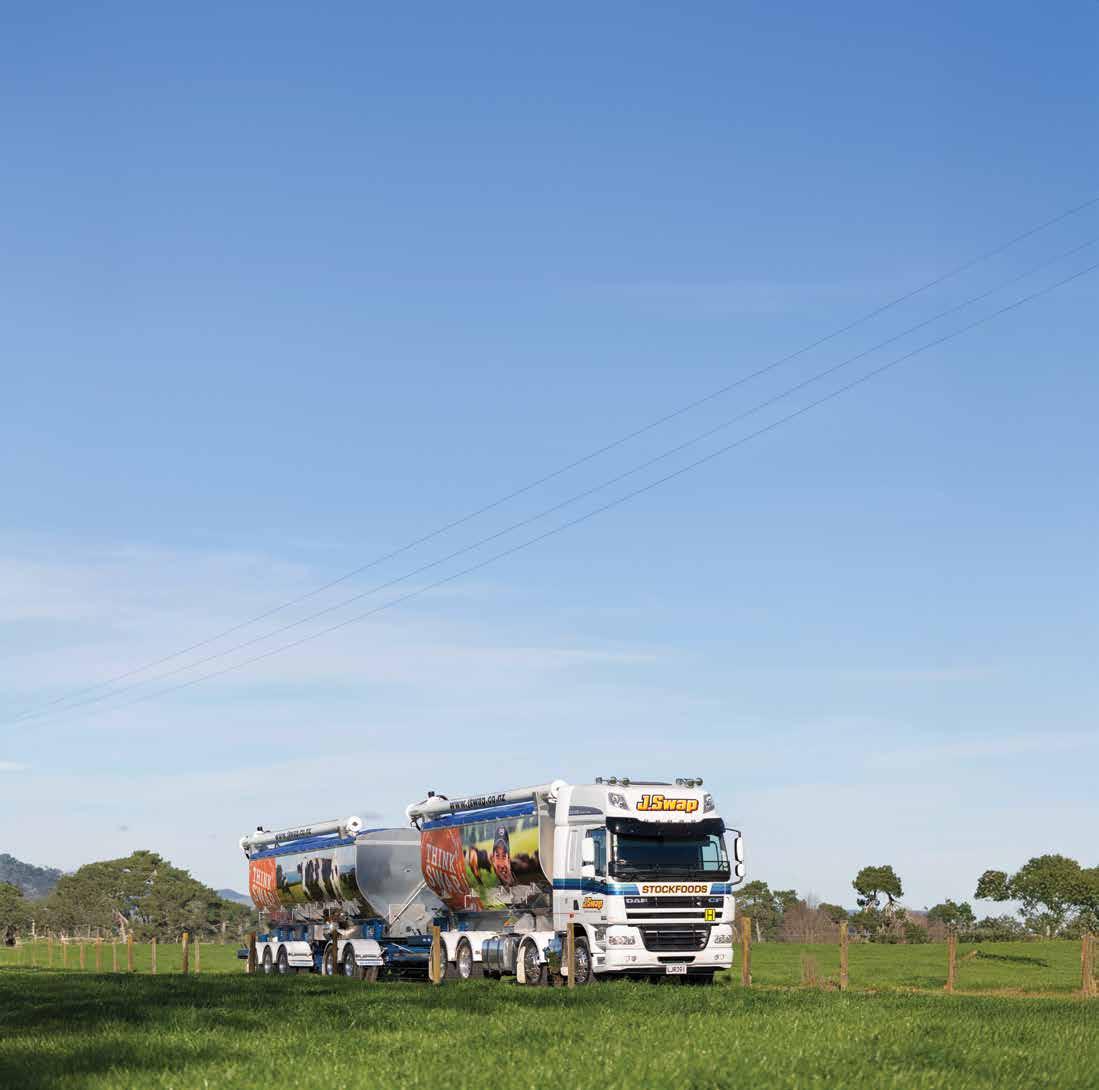
“The season is certainly set to start on a high.”
However, Tennent-Brown also cautions that there is huge degree of unpredictability around the trading environment, courtesy of the trade war.
The US and China are still some way from reaching any tariff agreement – so the impact on China’s economy from reduced exports and any offsetting government stimulus are not known.
“Yet those factors will have a lot of influence on dairy demand from our biggest export market – China,” he says.
“Our US-destined dairy exports include a range of specialised products which may insulate them to some degree. But there is always the possibility of additional tariffs if sector-specific tariffs ever get added in.
“We are sure, though, that Fonterra will be seeking out opportunities to supplant other countries’ exports, given that US exports into China will be drying up faster than milk in a powder plant and Canadians are probably going off spraying US whipped cream on their bacon and maple syrup pancakes.”

SUDESH KISSUN sudeshk@ruralnews.co.nz
Farmers dairy chair Matthew Zonderop says two consecutive years of a $10 milk price is fantastic for New Zealand agriculture.
With interest rates receding, Zonderop says farmers are “seriously making dents in our debt, getting those bills paid on time and without the stress of pushing the limits of overdraft”.
However, he cautions farmers against taking their eyes of the ball.
“It still takes careful management of your
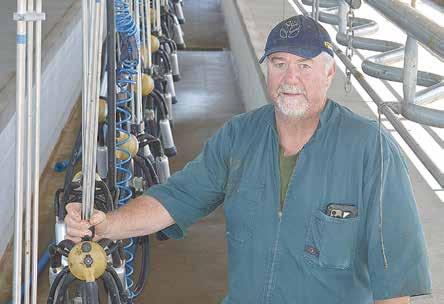
finances and budgets to get this debt under control,” Zonderop told Dairy News.
“Breakeven is still in the high $8 mark which means we can’t take our eye off the ball.
“One of the biggest wins really is the reduction of interest rates, this is really helping that
monthly budget.”
Fonterra will release its opening milk price forecast for the new season later this week.
Zonderop believes with the hopes of a strong opening forecast, a kind autumn and a tremendous feed bounce back, many farmers will hit the ground running.
But the high feed bills from this season, which ends May 31, could still be a hangover at the start of the season, he warns.
“With our bank balances teetering on the edge of ‘should I, shouldn’t I call the bank’, most of us will come
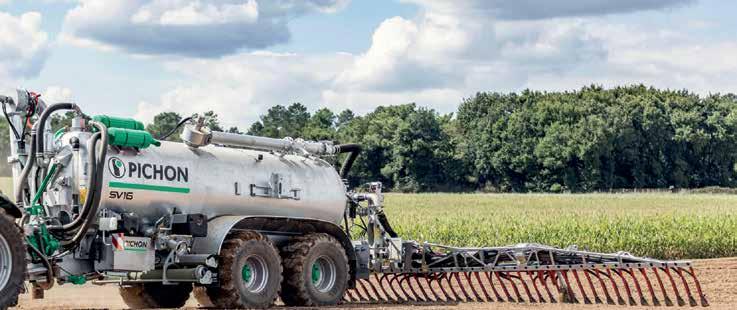
ANZ CHIEF economist Sharon Zollner says this season has certainly been one to remember, with a rare trifecta of strong global dairy prices, strong domestic production, and a weak New Zealand dollar.
ANZ revised its farmgate milk price forecast for the current season up by 15c to $10/kgMS.
Dairy commodity prices have continued to lift as the season draws to a close, says Zollner.
Fonterra’s milk price forecast for the 2024-25 season is $9.70 to $10.30, with a midpoint of $10/kgMS.
“While farmers have certainly enjoyed the combination of high dairy prices and a low NZD this season, the reverse would not be appealing,” says Zollner.
“The correlation between dairy prices and the NZ dollar has not been its usual self in the last couple of years, but it is in New Zealand’s interests that the correlation returns, as it is a useful shock absorber, sharing both the joy and pain of export commodity price cycles around the broader economy.”
DairyNZ estimates the breakeven milk price to be $7.51/kgMS this season, and $8.57/kgMS next season.
“Of course, an average hides a lot – in practice the breakeven price differs by region and indeed by farm,” says Zollner.
“However, based on our updated milk price forecast of $10/kgMS for both 2024/25 and 2025/26, that would make these two seasons a very solid run.”
through unscathed and those normal winter bill hangovers can be dealt with a lot easier until those retros kick in, especially with the lowering of interest rates, that extra in the back pocket will help us off to a great start.
“Although the cow prices have been through the roof, this season could be a tough start to first-time sharemilkers.
Even those who needed to top up extra cow numbers could offset those wins of the high opening forecast.”
Zonderop says debt reduction will be a priority for farmers.
“The golden rule of any business: pay yourself
first and the bank second still applies today.
“Farmers are now more discerning with their hard-earned cash and with more financial friendly tools available, we are doing our homework.
“First farm buyers are really doing their homework, and the dream is still possible. But our margins are still tight. Personally I think not too many will be spending up large at the Fieldays; ‘steady as she goes’ would be my option rather than a splurge, as there is always that unexpected expense around the corner.”
@dairy_news
facebook.com/dairynews

clean water, and comfortable areas to lie down and rest.
WINTER GRAZING is looming again and the Ministry for Primary Industries says it’s going to increase proactive farm visits and provide practical advice for farmers in the leadup to the season.
MPI’s national response manager Andrew Curtis says they will prioritise visits to farms where it can be more problematic to manage soil conditions during periods of wet weather. He says MPI’s proactive, on-the-ground support aims to ensure better outcomes for livestock, the environment, and farmers.
“We’ll be assessing these farms before livestock start grazing winter feed and they will be closely monitored to ensure they are meeting animal welfare standards. We will do follow-up visits in June,” he says.
Curtis says they have also been working with regional councils and industry groups, especially in Otago and Southland, to develop practical information to help farmers prepare.
“This includes an information flyer that contains a winter grazing checklist. Extra support is available for Southland farmers around managing their animals and reducing mud build up should they need it. Most farmers work hard to do the right thing and have carefully planned ahead to look after their animals,” he says.
According to Curtis, some farmers will need to continue adapting their approaches to ensure they have more robust backup plans during extreme weather, which can come with little warning.
Curtis says from timeto-time MPI will also have a helicopter in the air so that they can pinpoint potential winter grazing problem areas. He points out that earlier this year MPI successfully prosecuted a Southland livestock grazing company for allowing hundreds of cattle to graze in mud. “We visited numerous properties throughout Southland during the winter of 2024 and found most farmers were on top of their winter grazing requirements with good plans in place,” he says.
Curtis says sector groups have useful resources and information on their websites to help minimise the amount of mud created during winter grazing, such as back fencing and using portable water troughs to reduce walking distances for livestock.
He adds that animal welfare is everyone’s responsibility and MPI strongly encourages any member of the public who is aware of animal ill-treatment or cruelty to report it to the MPI animal welfare complaints freephone 0800 008 333.
Southland Federated Farmers president Jason Herrick earlier told Dairy News that farmers are prepared for winter grazing every year.
However, he says they don’t always have the benefit of hindsight and can’t predict what weather will show up when. “It’s all about controlling the controllables and having plans B right through to Z to deal with what the weather gods throw at us,” Herrick says.
of costly, unworkable rules put in there as well which, in turn, had farmers thinking of ways to
get around them because of the cost and ultimately led to some worse situations,” he says.
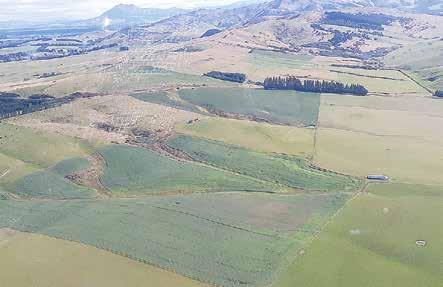

He says a well-planned winter grazing system supports good animal health and welfare. He says it ensures animals have sufficient and appropriate feed, access to
He says that the winter grazing regulations introduced by the previous government were “completely unnecessary” because most farmers were already following good practice.
“There were a lot





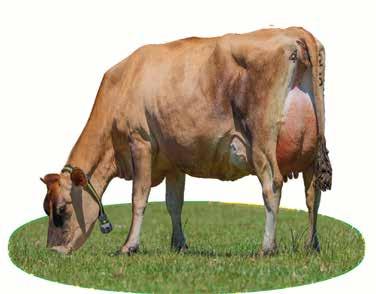





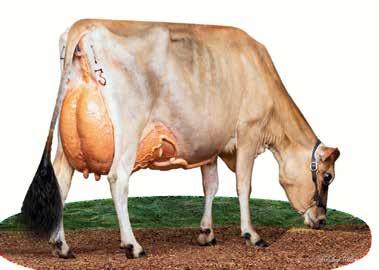

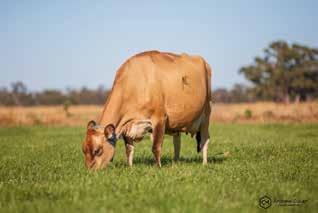
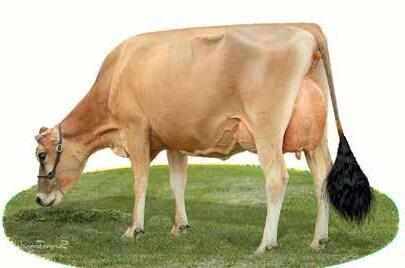











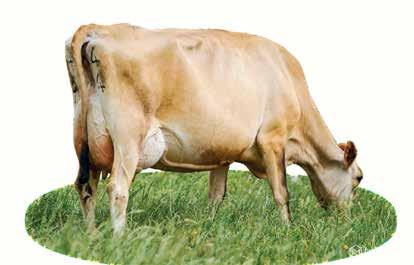




JESSICA MARSHALL jessica@ruralnews.co.nz
DOCTORS AND rural
women are welcom-
ing the recent pre-bud-
get announcement from the Government that it would be boosting funding to urgent and afterhours care facilities.
Associate Health Minister Matt Doocey
announced that Budget 2025 would include $164 million over the next four years to strengthen urgent and after-hours care across the country. This includes targeted
support for over 70 rural and remote communities, including extended afterhours care, 24/7 on-call in-person clinical support and improved access to diagnostics and medicines.
Those changes will be rolled out within the next two years with new services being trialed in Twizel, Tākaka, Tūrangi, Te Kūiti, Coromandel,
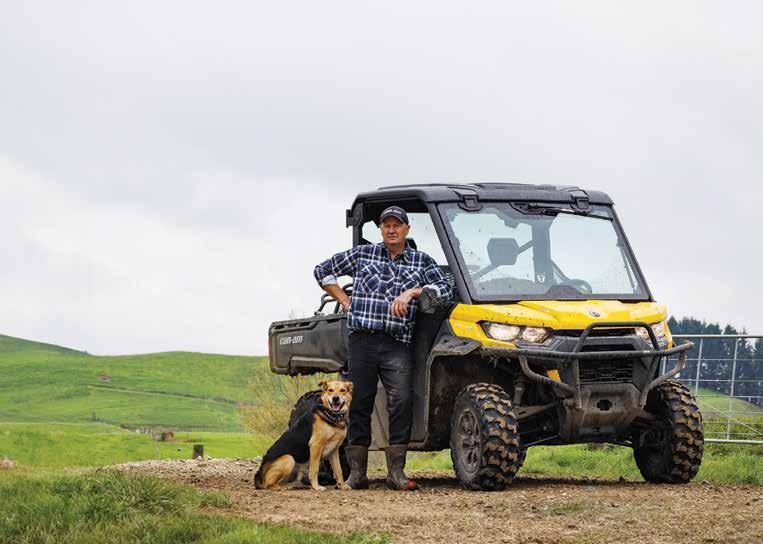

and Great Barrier Island before it is rolled out nationwide.
“People in rural New Zealand deserve access to timely, quality healthcare,” says Doocey.
He says the investment will reduce travel times, improve access to services, and take pressure off emergency departments.
“This is about delivering practical improvements that make a real difference for people living in rural and remote areas. Geography shouldn’t be a barrier to getting the healthcare you need,” he says.
Dr Grant Davidson, chief executive of Hauora Taiwhenua Rural Health Network, says that urgent and unplanned care has been a significant concern among rural general practitioners for many years.
“We are glad to see the Government placing focus on this and looking to apply increased funding,” Davidson says.
He says the funding could prove to be a “game-changer” for rural health.
“The solutions will be designed by rural providers, tested out by rural providers and ultimately, implemented by rural providers,” he says.
“We are excited to be part of this prototype project, which will not only improve urgent care access but also strengthen the sustainability of rural health services across the motu,” he adds.
However, Rural Women New Zealand national president Sandra Matthews says this should only be the start of a commitment to
improving rural access to health services.
She says the investment recognises some of the current issues by rural communities, but a sustained effort is required to address the challenges rural people face when accessing healthcare.
“Rural communities should not be disadvantaged in our health system,” Matthews says.
She says the new services being funded mark a “promising step”.
“We welcome the inclusion of trials that will be developed in partnership with rural providers, who know best how to respond to the needs of rural communities,” she says.
“However, real equity will only be achieved when every rural New Zealander can access quality healthcare, no matter their location.”
Matthews says Rural Women New Zealand continues to hear from rural women about long travel times to access basic healthcare, including effective maternity and paediatric care, a difficulty getting prescriptions filled after hours, and stress in accessing diagnostic services.
“These are fixable problems but require sustained investment and planning,” she says.
“We commend the Government for listening to our rural communities, but more will need to be done to ensure rural people have the same access to healthcare as other New Zealanders. Geographical equity in healthcare coverage must remain the overall goal.”

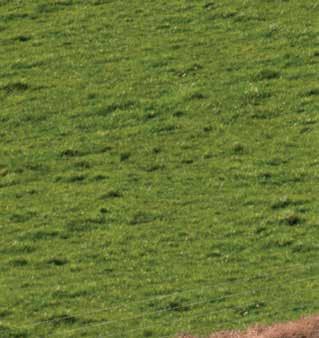
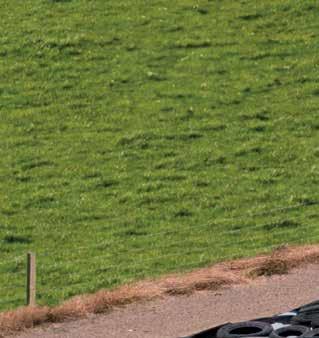

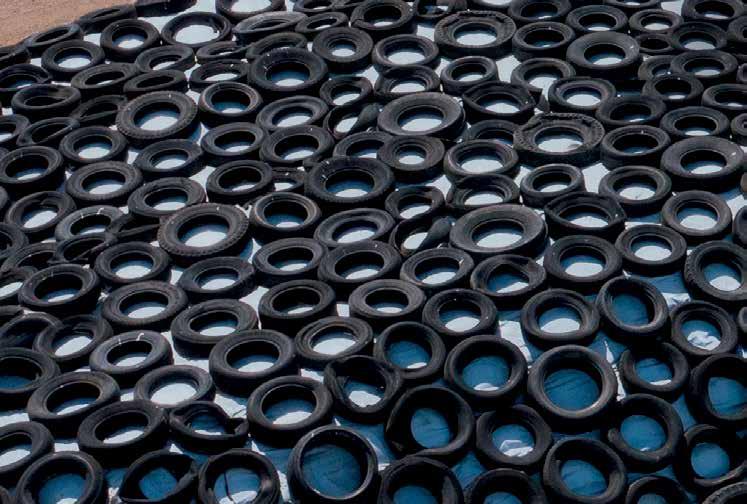
PERFECT PARTNER PASTURE’S

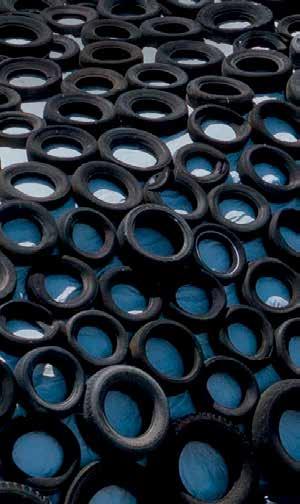















told Dairy News
THE GRASS may be growing again in the drought-stricken coastal area of Taranaki, but the outlook for many farmers there is far from rosy.
According to Federated Farmers Dairy chair in the province, Sam Ebbett, it’s going to be a tough winter for some people.
He says the effects of the drought will be long lasting and everyone has been using lots of supplements to get through the past five months. It could be September before things start to come right.
“Sure, everything is starting to green up and growing grass is less of a talking point, but certainly I wouldn’t say the drought was over,” he
One of the worries now, says Ebbett, is that some farmers have used up supplements that they would normally save for winter, and the challenge now is finding feed to make up for what has been used. He says it appears there is nothing available in the Manawatu.
He says up until now, feed was sourced from Hawke’s Bay and Tararua districts but by all accounts there is nothing available from there either.
“So, if you haven’t got any extra supplement in terms of grass supplement from somewhere in the country, I’d say you are up the creek at the moment,” he says.
While the coastal areas remain badly affected, inland areas
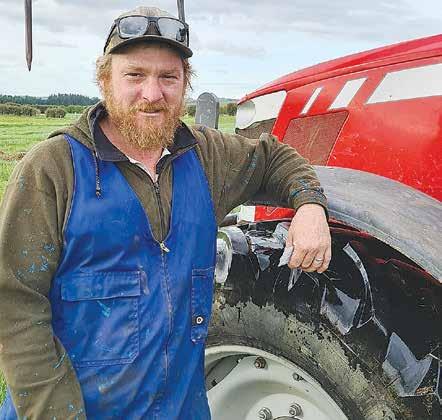
of Taranaki, especially those on the eastern side of the mountain are not affected.
Rural Support Trust coordinator in Taranaki, Marcia Paurini, says while the number of calls to
the trust have been low this month, she expects this to increase later this month and into June as
contract milkers in particular start to get a better handle on their financial position.
She says many face a situation where all their savings are gone from their last milk cheque.
Paurini says they will have to have documented proof of their financial status such as statements relating to any milk production drop due to the early culling of cows and whether the farm moved to once day milking.
“When we have that evidence, we will be able to support them,” she says.
Paurini says she has three facilitators out in the field helping droughtaffected farmers to apply for job seeker support.
But she says there are some barriers to getting this support – namely both partners need to be
working on the farm and that any easily realisable assets need to be sold.
At the same time, Paurini says she’s been organising some training for rural professionals in the area of ‘psychological first aid’ – in other words, building up skills for people who are likely to help others who are facing stress caused by the drought.
Like Ebbett, she says sourcing supplements is difficult and she’s put out requests to farmers in Wairararapa to see if they can help.
Overall, Paurini says people in Taranaki are in good spirits now that the grass is starting to grow and adds that there is usually a ‘flush’ in May, which means that some will be able to take a cut of silage before the winter sets in.
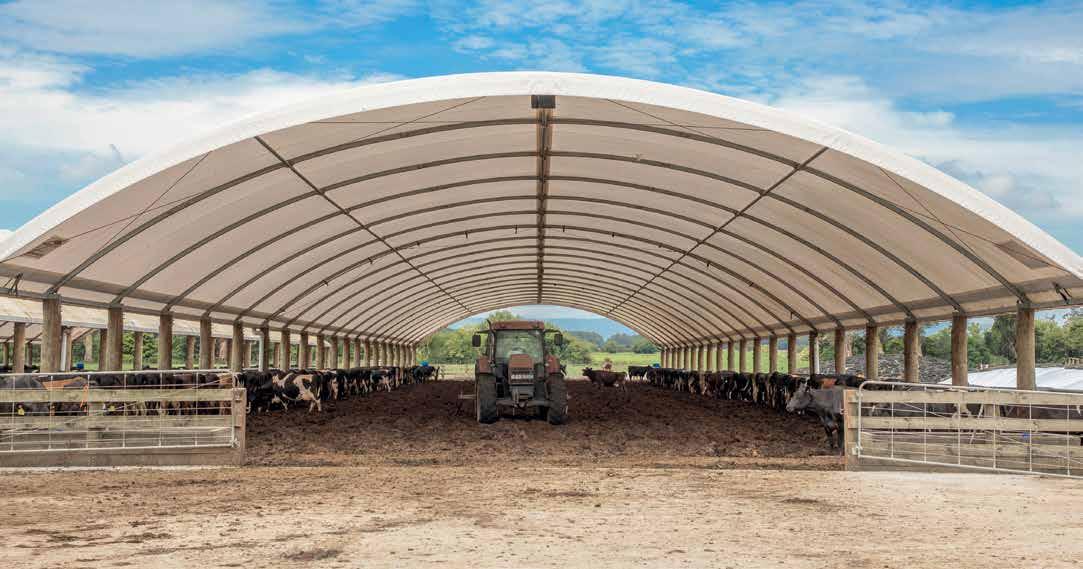

COME VISIT US ON SITE E84 AT THE NATIONAL FIELDAYS
A sheltered space for your animals with natural light and good airflow.
Exceptional durability: Superior quality structure made in New Zealand with an industry-leading 12-Year Warranty.
Have better control over effluent through capture and containment.
Healthier herd: Reduction of mastitis levels, elimination of lameness and calving inside on warm, dry bedding.
Return on investment: Proven to increase milk production by up to 20%.
The composted bedding provides nutrient-rich fertiliser for spreading on crops or pastures in spring.

into a lot of their systems and processes.”
WINNING THE 2025 New Zealand Share Farmers of the Year still hasn’t sunk in for Thomas and Fiona Langford.
The first-time entrants are equity partners and contract milkers on a 1090-cow farm in Putaruru. They took out the national title at the awards night held in Mount Maunganui this month.
“We were shocked on the night and it still hasn’t quite sunk in,” Thomas told Dairy News.
“It was an incredible evening to cap off a great week for the national awards. We enjoyed celebrating the dairy industry and meeting many amazing and talented farmers.
“We are incredibly proud of what we have achieved and the work we’ve put into our personal and professional journey in the dairy industry.”
On their way to winning the national title, the Langfords collected six of the nine merit awards given out on the night. They won over $38,000 worth of prizes.
Thomas says the awards are a great opportunity to network with farmers and agricultural leaders from around the country.
“The judges have taken the time to provide feedback in all areas of farming which we will use to continue to improve our business.
“It is also great exposure for Fiona and me at a national level. We are always looking for opportunities to grow and develop ourselves and have an influence on the wider industry.”
Share Farmer category head judge Steve Canton from DairyNZ says the Langfords impressed the judges with their overall excellence across the board.
“Thomas and Fiona are very focused on the detail,” he says. “They both come from corporate lives, and they have brought that experience
Fiona holds a Masters in Dietetics and Thomas a Bachelor of Food Science (Hons). They both began work in the Fonterra Technical Graduate Programme, with Fiona moving to Melbourne to work in the Nutritional’s team and Tom working with the Fonterra Nutrient Management team. Both have a Masters in Dairy Science and Technology which they completed during their time in the Fonterra programme.
The Langfords have no regrets turning their back on the corporate world in favour of dairy farming.
“We saw dairy farming as a great opportunity to create the lifestyle that we wanted and gave us the autonomy to control our development, direction and progression,” says Thomas.
“Zero regrets. The time we now get to spend together and with our family has been amazing. The trajectory we are on now towards our dream of farm ownership, governance and ag leadership is miles ahead of where we would have been staying in the corporate world.
“You do have to take the good and the bad with farming but for us the good has far outweighed the bad.”
He points out that they have a great support network around them and couldn’t have achieved what they have without their incredible support.
“Particularly Jos and Marian (farm owners Jos and Marian van Loos) who have and continue to support our growth both at a personal and professional level.
“We have an amazing team who have been very loyal and dedicated, we couldn’t do it without them. Community, network and support are important to us, and it is one of the reasons we are so involved at a community level.”
Farm ownership remains on the forefront for the Langfords.
Thomas says it is definitely one of
behind their business and their strategic plan.
“Alongside farm ownership we are also committed to growing our influence within the dairy industry through governance and supervisory roles. We are passionate about the industry and are excited about the future it has to offer.”


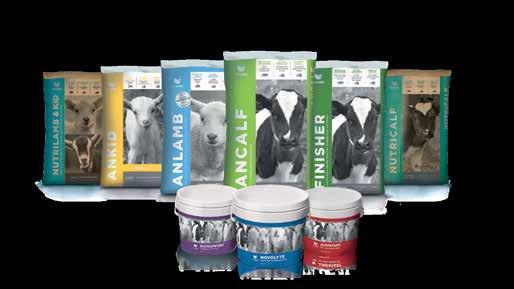
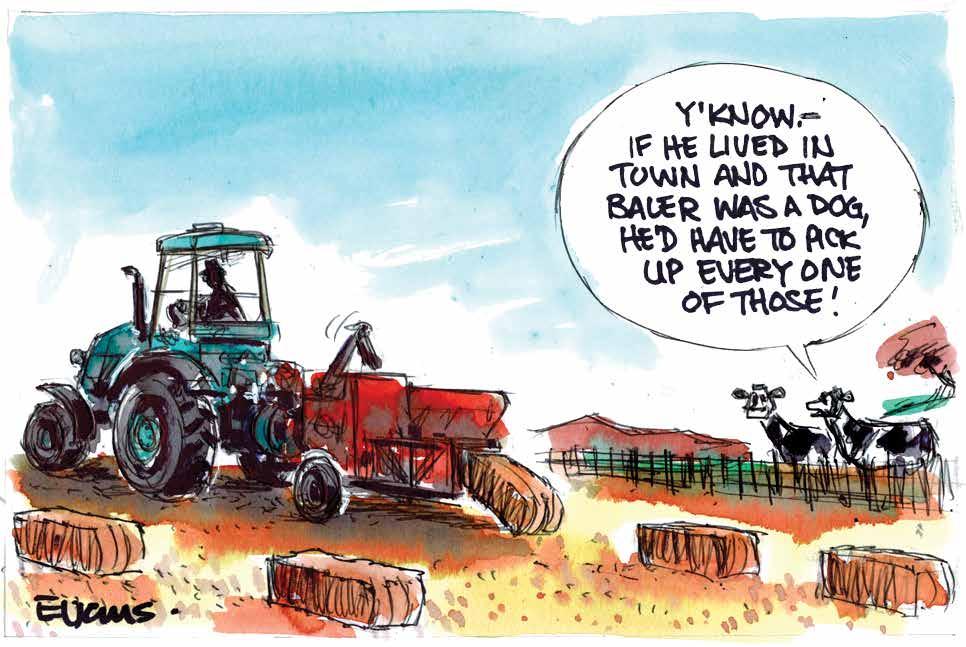
The Greens aren’t serious people when it comes to the economy, so let’s not spend too much on their fiscal fantasies. It’s worth noting though that NZ’s merchandise trade surplus in April 2025 was $1.4 billion, compared with a deficit of $12 million in April 2024, according to Stats NZ. New Zealand has had only four monthly surpluses over $1 billion. This one, and the others, are thanks to farmers. And yet, the ‘Green Budget’ includes a 2.5% annual tax on a couple’s net assets over $4 million and a 33% tax on inheritances over a $1 million threshold. This would see land held within the family for generations sold off just to pay the tax bill and, as Andrew Hoggard says, we’d see “a scarring effect on rural communities, a sledgehammer to rural investment, and food production shifted offshore”.
AT THE recent NZ Dairy Industry Awards, opposition leader Chris Hipkins made a surprise appearance.
And to his credit, Hipkins agreed to a brief interview with the awards media officer, Anne-Marie Case-Miller.
Asked what he was doing at the awards night, given that it’s not election year, Hipkins said he’s not sure he would have many votes in the room, made up of 620 dairy farmers, industry leaders and supporters.
“But it’s genuinely to celebrate success and speak to people who are doing amazing things within the dairy sector.”
The Government was represented at the awards by Associate Agriculture Minister Mark Patterson. Unlike previous years, there was no sign of the PM, Agriculture Minister or other Associate Ministers. However, Nicola Grigg only missed out after her flight was cancelled due to bad weather.
New national data from The Drug Detection Agency (TDDA), a leading workplace drug tester, shows methamphetamine (meth) use is growing and making up a disproportionate share of nonnegative workplace drug test results.
The proportion of meth detections has jumped since the start of the year January: 13.7%, February: 18.2% and March: 24.9%
The frontline data tells a confronting story; meth use is more than a big-city issue. The agency says it is seeing higher proportions of meth detections in smaller regions like the Central North, The Lakes and Taranaki.
However, there is no data break down for rural towns.
The agency says the issue with getting any more specific with rural data is that it becomes identifiable. Everyone knows who’s testing, who isn’t and what companies they’re using to carry it out.
So, for the farming sector, the days of finding out the level of drug use in their local patch may still be a while away.
THE FREE Speech Union is taking this one too far.
The group, promoting free speech, is backing the Wellington Tonkin + Taylor office worker who heckled Winston Peters while the Deputy Prime Minister was announcing funding boost for the rail network, at a station.
“Employers don’t own employees time when they are commuting to work, and the choice to heckle Winston Peters has nothing to do with Tonkin + Taylor. No one asked their opinion. They have nothing to do with the situation,” says the FSU.
Wrong. Wearing a company lanyard and then calling the deputy PM “a ****** moron” in front of TV cameras isn’t a good reflection on any person or its employer. Being an employee gives this person no right to bring disrepute to his employer.
FARMERS ARE rightly urging the Government to relax the rules around KiwiSaver and allow young farmers to use their savings towards purchasing either a house, cows or a farm.
After all, National’s agriculture spokesman Todd McClay, on the eve of the last general election, told farmers in Morrinsville that a National-led Government would let young farmers use their KiwiSaver as part of a deposit to buy a farm, or sharemilking herd or for a flock, to help them get on the ownership ladder.
He said people in towns could use KiwiSaver for their first home deposit, but in rural New Zealand, this wasn’t possible.
“This just seems wrong, and the next National Government will fix it,” McClay told farmers back then.
Now Federated Farmers wants the Government to deliver on that pre-election promise.
According to Feds, the announcement was incredibly popular, particularly among the next generation of farmers, but also with older farmers who are looking for succession pathways.
The federation points out that while National MP Suze Redmayne has since submitted a Members’ Bill that would address some of the issues young farmers face, it is but one of more than 70 bills in the Members’ Ballot – effectively a raffle – and her bill may never be drawn.
Federated Farmers national board member Richard McIntyre claims that having a Members’ Bill in the biscuit tin doesn’t even come close to delivering on their campaign promise.
He wants McClay and all rural MPs to really get in behind farmers and push hard on this issue.
With the National Fieldays around the corner, it may be a good venue for the Prime Minister, and McClay to finally deliver on their party’s election promise.
Head Office: Lower Ground Floor, 29 Northcroft St, Takapuna, Auckland 0622
Phone 09-307 0399.
Postal Address: PO Box 331100, Takapuna, Auckland 0740
by: Inkwise NZ Ltd Contacts: Editorial: sudeshk@ruralnews.co.nz
: davef@ruralnews.co.nz Rural News on-line: www.ruralnews.co.nz Subscriptions: subsrndn@ruralnews.co.nz
Publisher: Brian Hight Ph 09-307 0399
General Manager: Adam Fricker Ph 021-842 226
Editor: Sudesh Kissun Ph 021-963 177
Machinery Editor: Mark Daniel Ph 021-906 723
markd@ruralnews.co.nz
Reporters: Peter Burke Ph 021-224 2184 peterb@ruralnews.co.nz
Subscriptions: Julie Beech Ph 021-190 3144
Production: Dave Ferguson Ph 027-272 5372
Becky Williams Ph 021-100 4831
Strategist: Jessica Marshall Ph 021 0232 6446
AUCKLAND SALES CONTACT: Stephen Pollard Ph 021-963 166 stephenp@ruralnews.co.nz
WAIKATO & WELLINGTON SALES CONTACT: Lisa Wise Ph 027-369 9218 lisaw@ruralnews.co.nz
SOUTH ISLAND SALES REPRESENTATIVE: Kaye Sutherland Ph 021-221 1994 kayes@ruralnews.co.nz
NEW ZEALAND has said it is going to reduce its greenhouse gas emissions by ‘a lot’ and ‘in a short time’. One of those gases is methane. Our biggest producer of methane is livestock farming.
If you are a farmer of ruminants, or a person working in the sector, there’s a graph you really need to see and understand.
This graph, Figure 1.6, has been hidden where nobody will see it, on page 133 of the 5th assessment report (AR5) of the Intergovernmental Panel on Climate Change (IPCC).
The people who put this graph into the report understand what it means, but they were probably thinking no one would see it, because few
actually read the reports. However, I do read the reports and when I saw the graph I was surprised they were honest enough to include it. I want to explain what this graph means and why it matters.
This is a screenshot of Figure 1.6 from AR5. It shows the amount of methane that the models in the four previous reports said would be in the atmosphere. It also shows the actual observed methane in the atmosphere. The model projections are the shaded areas. The observations of real-world values is the dark dotted line. The observations of the real world end up being below and outside the range of all the model projections. That should not happen. The model projections are not merely based on theory.

A model is a mathematical representation of the theory. If the theory is correct, the observations of the real world should always fall within the range of the projections. This is an experiment to test if the theory is true.
As Richard Feynman famously said, “It doesn’t matter how beautiful
your theory is, it doesn’t matter how smart you are. If it doesn’t agree with experiment, it’s wrong.”
So, the theory, on which their models are based, is wrong. This matters because this theory is the basis of government policies that are requiring a reduction in
methane emissions.
So, what was their theory? They tell us on page 134. They say, “Because at the time the scenarios were developed… it was thought that past trends would continue.”
The basis of their model projections was to extrapolate the past trend
into the future.
By publishing this graph, they are saying their theory was wrong. They know their understanding is flawed. Our government’s policies are based on this. The fact methane is produced by bacteria in the rumen is not a mistake. It’s part of the digestion process. But, because of this theory, they plan to vaccinate cows against some of the bacteria that digest their food. What could go wrong?
Methane emissions from us are supposed to be 60% of the total.
Natural emissions are supposed to be reasonably constant. But if that were the case, we should expect to see a rise in methane in the atmosphere when our emissions rise.
The fact that this was not observed suggests
this change in atmospheric methane was because of natural processes. Which means there is no reason to demonise farming.
We can easily explain how they might have got it wrong. It looks like they have underestimated the natural emissions of methane. Which, to be fair, is easy to do.
The official values for total and natural methane emissions are not the result of observations. They are calculated based on theory, assumptions and modelling, about which they admit, there is considerable uncertainty. Would it not be a good idea to put off imposing costs on farmers until the ‘experts’ can honestly say they have a good understanding of what is happening with methane?
• John Riddell is a dairy farmer in Waikato
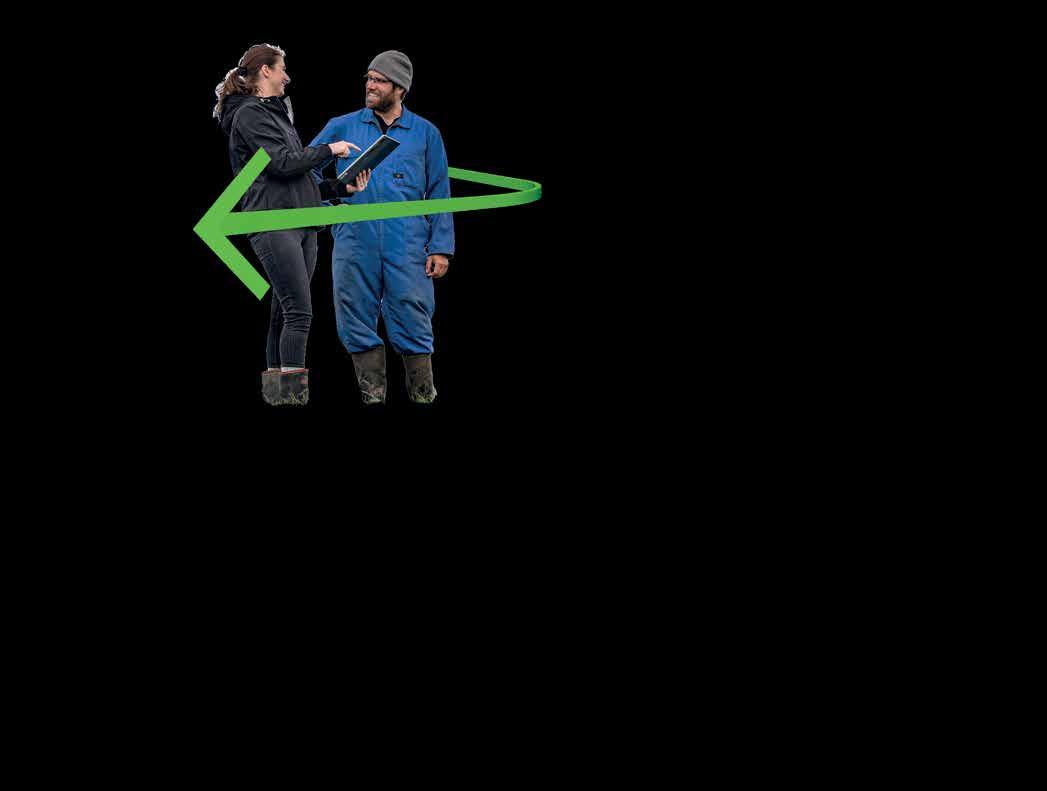
THE TRANSITION period is one of the most demanding phases of a dairy cow’s life.
Her metabolism is under pressure as she prepares to calve, initiate milk production, and shift to a higher-energy diet. At the same time, her liver, rumen, and immune system are all adjusting to new demands. How well she copes during this period depends on
more than just calcium— it’s about supporting the full range of metabolic processes with the right mineral balance, good body condition, and consistent feeding. Getting these factors right pre-calving sets the foundation for health, performance, and fertility across the whole season. What is DCAD, and why does it matter during transition?
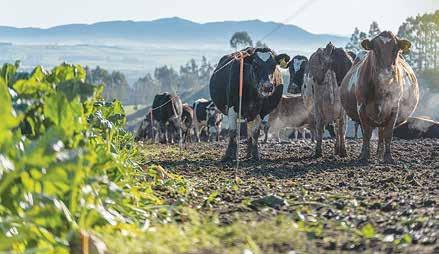
DCAD refers to the balance between positively charged ions (mainly sodium and potassium) and

negatively charged ions (mainly chloride and sulphur) in the diet. High DCAD diets, common with lush spring pasture, make the cow’s blood slightly alkaline, which is a problem during transition. It blunts the hormonal signals that allow the cow to release calcium from her bones and absorb it from her diet.
Switching to a negative DCAD diet just before calving slightly acidifies the blood. This stimulates the parathyroid hormone response, effectively priming the cow’s system to mobilise calcium as soon as lactation begins. Without this preemptive adjustment, cows are at much greater risk of both clinical and subclinical milk fever. Subclinical cases are especially common and often go undetected, but they have a direct impact on uterine tone, retained placenta rates, appetite, mastitis incidence, and conception success. Mobilising calcium is only the beginning
Feeding a negative DCAD diet during the final three weeks of the



dry period helps kickstart calcium metabolism before calving. But calcium is only part of the transition equation. Magnesium is another critical factor as it’s essential for activating the enzymes that regulate calcium metabolism. Without sufficient magnesium, the DCAD effect is blunted.
Combining magnesium with appropriate chloride and sulphur sources supports the acidifying effect needed to prompt a metabolic shift. But this needs to be done carefully. Excess sulphur, for example, can interfere with copper and selenium uptake.
Don’t guess – test Guesswork doesn’t work when it comes to transition diets. A transition cow needs a well-balanced, negative DCAD formulation designed to deliver a reliable response, without suppressing appetite or triggering acidosis.
Urine pH is the best on-farm tool to track whether your pre-calving diet is doing the job. The target range is 5.5
to 6.0 for Jerseys, and 6.0 to 6.5 for Holstein Friesians. Collect urine samples from a handful of cows four to six hours after feeding, and adjust accordingly.
Consistency matters too. If the transition mineral mix isn’t evenly distributed through the ration, or if cows can sort through their feed, intake will vary, and so will outcomes.
The all-important liver
One of the key insights from recent research is just how much work the liver does during transition. As feed intake drops and energy demand spikes post-calving, the liver becomes the centre of activity – mobilising fat, metabolising toxins, producing glucose, and processing nutrients.
To handle this, the liver needs the right building blocks.
Trace minerals such as selenium, zinc, copper, and manganese all support liver detoxification and antioxidant capacity.
Choline, niacin, vitamin E, and methionine also play roles in liver regeneration and energy metabolism. These nutrients aren’t just nice to have, they help reduce the risk of ketosis, fatty liver, and sluggish recovery post-calving.
Condition, fibre, and rumen function
Transition success isn’t just about minerals.
Rumen dynamics and cow condition also play a role.
Maintaining adequate neutral detergent fibre (NDF) intake – ideally
over 45% of the diet – with high-quality, palatable forage keeps the rumen full and working. This helps preserve rumen muscle tone and volume, both of which are essential for appetite and energy intake postcalving.
Body condition scoring (BCS) is another useful tool. Cows should calve down at a BCS of 4.8 to 5.2, with no more than 0.25 to 0.5 of a score gained over the dry period. Over-conditioned cows are more prone to metabolic issues, while under-conditioned cows struggle to reach peak milk or cycle effectively.
Newer technologies, such as 2D/3D imaging and automated BCS systems, can provide accurate condition tracking during the dry and transition periods, helping farmers fine-tune feeding and management decisions before issues arise.
What success looks like
A successful transition is marked by less than 2% clinical metabolic disease, strong appetite close to calving, good liver function, steady energy levels, optimal rumination, and rapid recovery within 48 hours post-calving. When done well, the benefits extend beyond calving with fewer down cows, better early lactation intake, stronger immune response, fewer retained placentas, and quicker return to cycling with higher conception rates.
• Chris Balemi is the founder of Agvance Nutrition



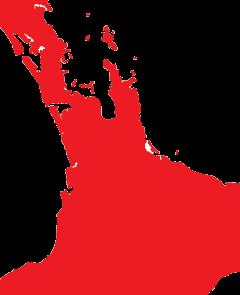
NEWLY APPOINTED
National Fieldays chief executive Richard Lindroos says his team is ready, excited and looking forward to delivering the four-day event next month.
He says with 1200 exhibitors locked in, there are still a few sites available. The four-day event kicks on Wednesday, June 11.Over 100,000 people are expected to attend.
Lindroos, who took as NZ Fieldays Society chief executive on April 7, told Dairy News that he was feeling “very positive”.
“Everything is under control: the team is well planned - we are in a good space and really looking forward to delivering.”
He says that the Fieldays at Mystery Creek is the only show in town in June. “Wherever you are in New Zealand and wherever you get your news from, you have to be here.”
The Society, which owns and runs the event,
has embraced the ultimate “mullet strategy” –business in the front, party in the back – to bring together innovation, education and globalisation to this year’s event.
Lindroos says Fieldays has always been about combining the cuttingedge agricultural technology, networking, and insightful discussions, all while celebrating the uniqueness of the rural sector and bringing town and country together.
New ‘business in the front’ initiatives include Fieldays Tent Talks in association with the University of Waikato, Fieldays Drone Zone, and the Fieldays Sector Spotlight -‘It’s Wool’. The new initiatives join returning Fieldays Hubs, the Rural Advocacy Hub, Forestry Hub, Careers & Education Hub, Innovation Hub and the Health & Wellbeing Hub.
‘Party in the back’ initiatives include the Fieldays Family Fun Zone in the Heritage Village and Super Saturday – a campaign with exhibitors to deliver unbeatable prices
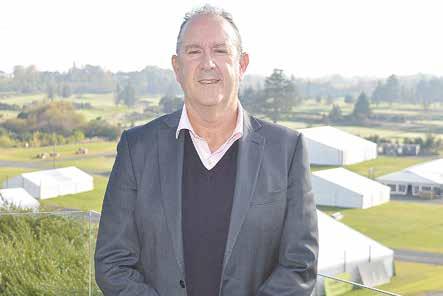
and exclusive Fieldaysonly offers.
The 50th anniversary of Fieldays Tractor Pull in association with PTS Logistics will also bring excitement to punters.
Lindroos says entries are now open, and early indications suggest that we’re gearing up for another busy event with strong turnout from both drivers and spectators.
When Dairy News visited the Mystery Creek site two weeks ago, the ‘packing in’ part of the event was well underway, with buildings and marquees under construction.
Lindroos explains that while the Fieldays is run over four days, getting the site ready for the event and then dismantling structures after the event is a three-month process.
The ‘packing in’ covers six weeks prior to the event and is well staged and coordinated. Builders turn up first to construct sites, followed by tradies and exhibitor staff to set up the sites for visitors. After the event, the ‘packing out’ takes about a month to clear the venue.
Tickets can be purchased online via the Fieldays website, or at
the gate during the event. Every ticket purchased is a chance to be in to win the ultimate Fieldays gate prize of a $50,000 JAC T9 Ute and $10,000 of Stoney Creek gear. Visitors can triple their chances to win during the event by visiting the JAC site at F90 and Stoney Creek at site F55.
Tickets on sale also include the Fieldays VIP Business Plus in association with KPMG; a VIP ticket including access to an all-inclusive lounge developed to enhance the experience of business and rural leaders at the event.
THE NATIONAL Fieldays is more than just an agribusiness show; globalisation is also one of its key aims.
The four-day event also attracts thousands of trade visitors, from both NZ and overseas, who meet with primary industry exporters and government and trade officials to do deals.
Fieldays chief executive Richard Lindroos says the first three days of the event is packed with meetings between NZ Trade and Enterprise (NZTE), Ministry for Primary Industries (MPI), trade ministers and ambassadors.
While there is a domestic focus at the Fieldays, the Society also focuses offshore, with the aim of bringing large delegations to the event.
Lindroos says during his first five weeks in the role, he has hosted a Chinese delegation looking to expand its footprint in 2026.
“We have six exhibitors from China this year. While that’s not a big number, we expect that number to grow in 2026,” he says.
“We are also planning for a large Indian delegation next year on the back of the free trade negotiations between NZ and India.”
With NZTE, the Society is also looking at attracting delegations from Brazil, Argentina and Chile next year.
In his new role, Lindroos also aims to future proof the organisation, making it more financially resilient. This includes upgrading its assets and attracting more events to the Mystery Creek site.
He points out that with the Fieldays taking up three months of the year, the event centre is open for business for the remaining nine months.
“We have nine months to bring world class events. We can’t compete with ratepayer-backed councils, but we can push our competitive advantages - our scale, our location and we are greenfield site not restricted by stadia.”





















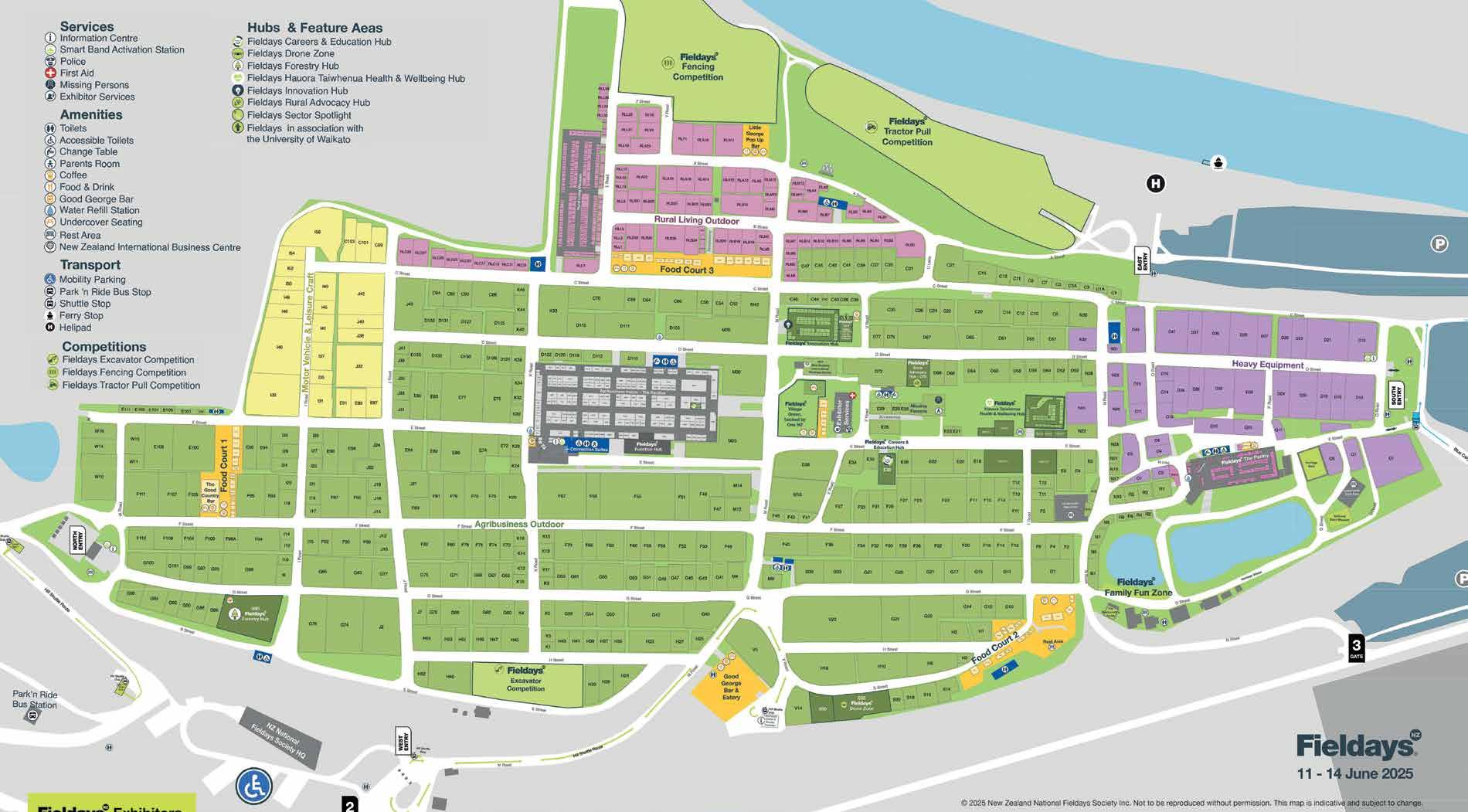
















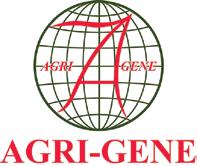




FROM THIS winter farmers have a greater choice of feed types and blend options than ever before, thanks to Farmland’s purchase of animal nutrition company SealesWinslow.
The National Fieldays marks the official kick off date for the new alliance, which will see SealesWinslow retain its name while offering a broader range of feed options.
Grant Jackson, general manager of SealesWinslow welcomes the opportunities the Farmlands purchase brings, with multiple benefits to farmers across the length of the country.
“SealesWinslow has been known mainly for its quality compound or
pelletised feeds. Farmlands ownership means our team can now include commodity blend solutions alongside our pelletised options.”
He says the full national coverage lifts the number of feed mills under the one umbrella from three to eight, now extending from Whangarei to Winton, matched by a nutrition team set to double in size with the SealesWinslow purchase.
Bunnythorpe sharemilker Craig Gregory is among the first to enjoy the benefits of combining SealesWinslow’s quality pelletised feed with a bulk feed option.
He runs a System 5 high input operation for
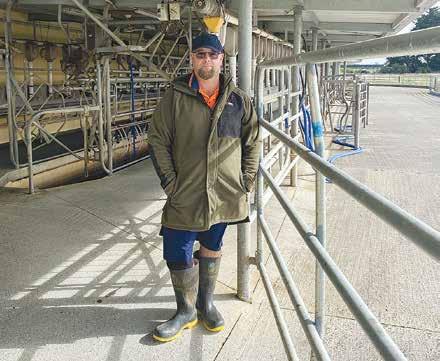
his 330 Holstein Friesian herd and has tuned up their feed regime in the
past year, working alongside his SealesWinslow nutrition rep Peta Ham-

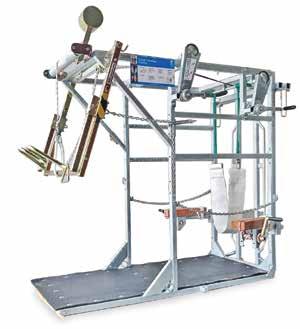
ilton.
“We have opted for the Value Dairy pellet as
COMING TO the fore following the carnage of Cyclone Gabrielle, Starlink became well known for providing internet access even in NZ’s most inaccessible places. Now a new agreement is about to benefit farmers and growers.
CNH has announced an agreement with Starlink, a subsidiary of SpaceX, to bring industry-leading satellite connectivity to farmers. The collaboration will provide customers of CNH brands with robust and affordable high-speed connectivity, further unlocking the benefits of a fully connected fleet.
Starlink’s advanced satellite network offers reliable, low-latency internet, enabling intelligent machines to communicate and coordinate efficiently, enhancing
50% of the feed, and the other 50% is bulk palm kernel expeller (PKE).
The mix means we avoid any blockages in our inshed feeding system.
“It gives the herd that extra production pushit’s really the difference between feeding them and fully feeding them.”
He says being able to include PKE alongside the pellets also makes them a more affordable option, whilst still delivering valued nutrient benefit.
He feeds 3-5 kg a cow a day during lactation and the blend forms part of a feed regime that includes maize and grass silage in addition.
Jackson says farmers
productivity and yield.
The system seamlessly integrates with the CNH FieldOps digital platform, giving users visibility of their machines and providing data from any location, at all times.
It also offers users greater data streaming capabilities by keeping their farm management devices consistently connected, regardless of location.
Prescription spraying is another potential situation where Starlink’s fast and reliable transmission technology will benefit farming operations. A lack of connectivity in some markets can make farm logistics challenging.
CNH’s FieldXplorer platform uses AI to transform drone images
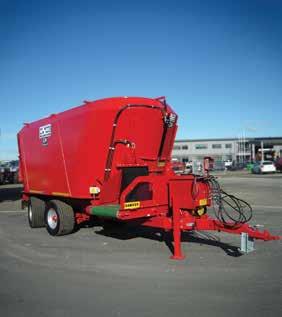
can now enjoy the best of both worlds through SealesWinslow’s feed offerings, giving their herds high quality pelletised feed, alongside higher volume, cost effective bulk feed.
“More farmers are starting to realise it is not just about giving their cows more of one feed but want to achieve better productivity with a lighter environmental footprint, optimising their feed options.
“With strong payout prospects, the timing has never been better to consider those optimal feed options and avoid leaving production on the table.”
@dairy_news
facebook.com/dairynews
into a field map that distinguishes between weeds and crop.
Using a Starlink connection, the manufacturer says they can now export that data near instantaneously to create a prescription spraying map for the machine.
The result is farmers being able to apply crop protection products sooner, controlling weeds earlier, helping to improve crop yields.
“We’re thrilled to offer our customers access to industry-leading satellite connectivity, enabling them to maximize the potential of our full suite of precision technology in even the most challenging rural environments,” said Stefano Pampalone, agriculture chief commercial officer at CNH. – Mark Daniel

DAIRYNZ IS back at Fieldays and bringing their science, expertise, and some interactive displays along.
“This year, we’re all about Innovate, Integrate and Collaborate, showcasing how our research and partnerships are helping shape resilient, future-fit farm systems,” it says.
“Whether you’re keen to hear about the latest science, connect with sector leaders, or explore hands-on tools to take back to the farm, there’s something for everyone.”
At their main stand in The Pavilion (site PC44), DairyNZ’s farm system expertise will be in action.
The industry-good body is highlighting some key research, including:
• Improved forage gains – See and compare forage species in our dis-

play model, and discover more about their resilience under stress, and how improved forages can enhance feed efficiency, profitability, and resilience on your farm.
• Healthy waterways
– Learn about practical tools and actions to enhance your waterways and go in the draw to win $1500 worth of plants. You can also immerse yourself in a VR kayak journey through
the Pōkaiwhenua Catchment and experience the positive impact that partnership and a focus on waterway health can create.
• Greenhouse gas emissions – Gain clar-
ity on this complex topic and hear about the top actions you can take to help reduce emissions on your farm, while considering your full farm system to maintain profitability.
DairyNZ specialists, board members and leadership team will also be there to answer questions and chat about how they’re working to ensure New Zealand dairy thrives well into the future.
Visitors can also swing around the corner to site PB49 in The Pavilion to catch up with the team at Dairy Training, a DairyNZ subsidiary, who are ready to talk about free, NZQAaccredited practical training options to upskill farmers and their team.
Collaborating with partners
DairyNZ says getting off-farm isn’t easy, so they’re making farmers visits worthwhile by collaborating with other sector organisations to have multiple DairyNZ sites packed with value.
‘This reflects our focus on partnership and inte-
gration, and the wide range of work we do to support farmers—on farm, across the industry, and for the future,” it says.
“You’ll also find us at the MPI Science for Farmers Tent (E38), where we’re showcasing science projects supporting the future of dairy farming. At the Federated Farmers Advocacy Hub (D70, Gallagher Building), we’re highlighting our work advocating to Ministers and MPs on the key dairy sector issues.”
DairyNZ says it cannot wait to connect with farmers at Fieldays 2025.
‘Whether you’re looking to explore innovation, dive deeper into science, or simply have a good conversation with people who get it, DairyNZ looks forward to connecting with you.”
Site PC44













AFTER HELPING many farmers detect lameness early using artificial intelligence (AI), Herd-i is rolling out its new body condition scoring (BCS) system.
This month, 42 selected dairy farmers are the first of 100 in New Zealand to go live with Herd-i’s BCS system.
These early adopters are integrating this new AI technology into their dairy sheds to monitor cow health year-round with near real-time, daily body condition scores.
Farm sizes of the first 42 operations range from 263- to 1972-cow herds.
Traditionally, dairy farmers rely on manual body condition assessments, which can be inconsistent, time-con-
suming, and typically done only a few times a year. Herd-i’s AI-powered system eliminates these challenges by providing consistent, daily body condition scores, enabling farmers to monitor trends in their cows’ conditions year-round.
Amanda and Dean Benson, who own and - together with secondin-charge, Josh - manage a 250-cow dairy farm in South Waikato, are the very first of Herd-i’s group of 100 BCS launch farmers to have the technology installed during May.
For Amanda, the decision to adopt Herd-i’s system was all about gaining consistent data and being able to make fast, informed animal

health decisions.
“When we learned about Herd-i’s BCS system, it didn’t take much to convince us to integrate it into our operation. We were already
THE FIELDAYS Innovation Awards competition has attracted a diverse and impressive array of innovations from across the primary industries, highlighting the growing importance of technology shaping the future of farming.
Sixty-three applicants have been invited to showcase automation, robotics, and AI innovations, alongside practical on-farm,
efficiency-increasing devices and ‘problem-solvers’ at the event.
“What stands out is the breadth of areas the entries come from, with ground-breaking ideas that redefine sustainability, automation, and efficiency,” says Fieldays programme manager Steve Chappell. “These include eco-friendly materials that transform waste into valuable resources to AI-powered tools
familiar with how manual body condition scoring works, and we knew the inconsistencies we faced using this method.
“With Herd-i, we’ll have daily data, which
optimising livestock management, alongside precision monitoring, and crop growth.”
A range of entrants sees in 23 in the Prototype category, thirtytwo in the Early-Stage sector, and eight in the Growth & Scale competition. Five participants of 19 years old or younger, are also in the running for the Young Innovator of the Year award.
means we can make quick, proactive and informed decisions, not just react when a cow is clearly in a poor state,” she says.
“Herd-i will allow us to monitor every cow’s trend, address health issues before they become severe, and improve the overall health and productivity of our herd.”
According to Marty Orange, Herd-i’s sales manager, “Herd-i provides farmers with daily body condition data which is presented as rolling average trends. This allows farmers to more closely monitor small changes in the body

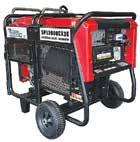
condition of their herd”.
“These small changes in individual cows include data that shows the cow is losing or gaining body condition at a different rate to the rest of the herd. Getting this data in near real-time allows farmers to more quickly adjust their farming practices when required.”
Herd-i chief executive officer Liz Muller told Dairy News that AI and Herd-i are both changing the game for kiwi dairy farmers.
Muller says Herd-i is using Ai to enable the early detection of lameness using 14 annotated key points on a dairy cow.
“We track the gait
of the cow and identify when the gait changes which may indicate the early signs of lameness.
“Early detection of lameness – ability to treat early and cost effectively and get faster recovery times and less reoccurrence of lameness, maximised milk production, improved reproductive performance and improved animal welfare.”
Muller says AI has a significant role to play on NZ dairy farms where there is the opportunity to automate work that is subjective - AI removes the subjectivity - where consistency, speed, precision and sensitivity are required.
“The ability to detect small changes that are not easily detected by humans for example,” she says.
Herd-i will be at the Fieldays – at stand K24 where a large LED screen will show farmers how the technology works.
There will also be displays videos of cows being scored for lameness and BCS. “We also are running a ‘Guess the Lameness Score’ competition where farmers can win a free Herd-i system for a year,” says Muller.
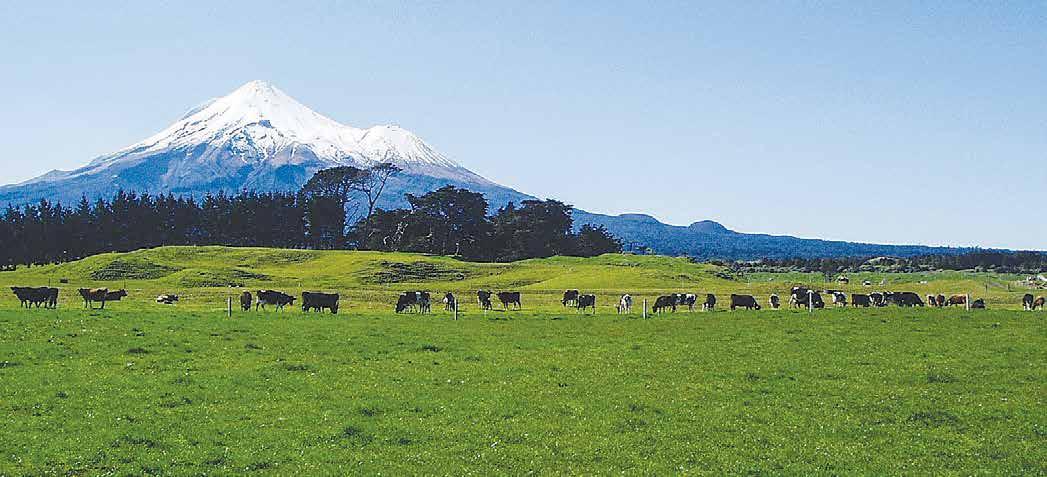


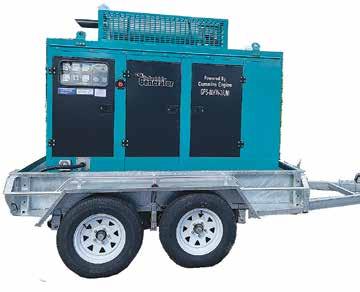

this technology can do— not just in theory, but in practice.
FOR THE first time, all the big names in agricultural drone technology are being brought together under one marquee at the National Fieldays.
The Agricultural Drone Association has partnered with Fieldays to support the Drone Zone and bring along members, says association president Craig Simpson.
“The Drone Zone has been a fantastic addition by the Fieldays team. If you want to see where the future of ag drones is headed, that’s the place to be,” he told Dairy News.
He says the association’s goal is to help educate and inform farmers, contractors, and rural professionals about what
“Flying an ag drone isn’t just about buying the hardware. You need proper training, certification, and an understanding of how to operate within New Zealand’s aviation and environmental rules.
“That’s why we’ve made sure the Drone Zone includes not just the tech companies, but also training providers, certification experts, and regulatory advisors. It’s a space for real conversations, hands-on demos, and helping people take the next step.”
Simpson’s company Aerolab is the largest supplier of commercial agricultural drones in New Zealand. Founded five years ago, the company has seen exponential growth. His company are showing multiple brands

and models of very large ag drones.
“We will also be flying one to show off their ability. You will be able to check out a number of drones manufacturers and directly compare them.”
Simpson says that over the past year, the ag drone sector has seen a
real shift in momentum.
“Up until recently, there were around 80 large agricultural spray drones in operation across the country. But this year alone, that number has easily doubled—and it’s still climbing,” he says.
Simpson attributes this to the technology
“hitting a sweet spot”.
“A few years ago, drones were limited to carrying 20-litre tanks. Now we’re seeing models that can carry up to 80 litres with much longer flight times, which makes them a genuinely viable alternative to traditional ground or air equipment for many jobs,” he says.
Increased visibility is also driving growth.
Simpson says that once farmers or contractors see an ag drone in action and how fast and precise they are it makes sense.
Simpson’s message to farmers is that drones are no longer a future concept, they’re a practical tool that’s already delivering real benefits.
“They’re especially useful in hard-to-reach or wet areas where vehicles can’t go, or where aircraft would be too expensive or impractical,” he adds.
“If you’re a farmer considering drones, the key message is this: start simple and get the right advice early. There are training pathways and support networks available to help you learn how to operate drones safely and within CAA rules. First off, you’ll need certification under Part 102, so we have a
network of experienced trainers and to guide you through it.”
The return on investment is real. He says drones save time, reduce labour, and help farmers apply fertiliser or spray only where needed and when needed, which means less waste and lower costs.
“Our customers find their drone paid for itself within a single season.
“If you’re curious but unsure where to start, reach out to the Agricultural Drone Association or come to a field event like the Drone Zone at Fieldays. You’ll find demos, experts, and fellow farmers who’ve been through the journey and can help you get started. The technology is ready. The support is there. Now’s a great time to explore what drones could do for your business.”
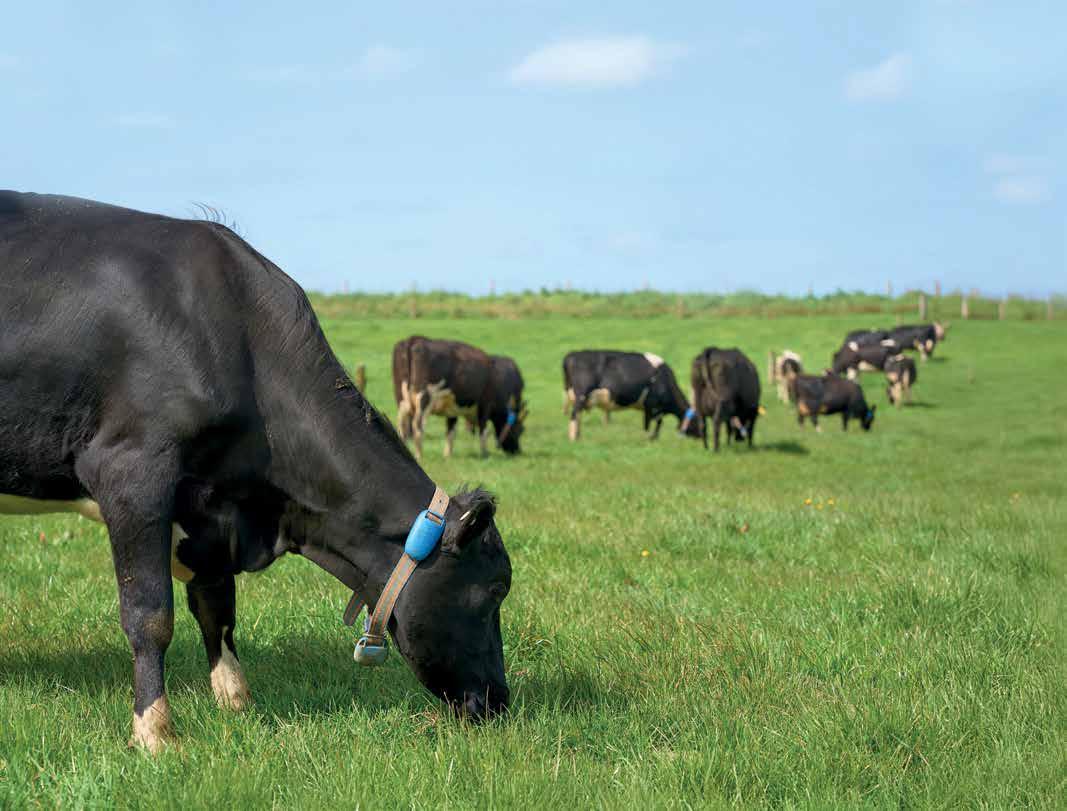
ST GENETICS breeding consultant Jean Macky believes that it is time for New Zealand farmers to look at Aussie Jerseys.
ST Genetics distributes Genetics Australia
(GA) semen in New Zealand and Macky joined her GA colleagues and several Kiwi farmers on the recent World Jersey Conference tour in Australia.
“I love the capacious style of the Australian cow and I need to convince more New Zealanders about them,” she says.
“There is a misconception that cows are treated differently in Australia and there is a different style of farming, but in reality, it’s very similar.
“Generally, the New Zealand Jersey has become too small, in my opinion, and I think they lack a bit of the depth and strength of Austra-

lian Jerseys,” she said.
“They seem to be getting smaller and winters are very tough in New Zealand but we can learn a lot from Australia.
“A lot of farmers have gone into KiwiCross but if they could see this modern style of Jersey cow, they probably wouldn’t have gone into the crossbreed. They wanted to get away from
Tailored Presentation
Real Time Data
Action Alerts
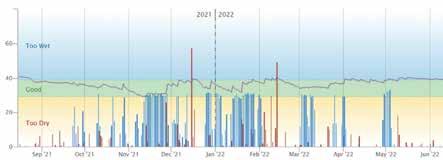
the smaller and bigger cows so they’ve created this mid-sized cow – but that’s what the Jersey is in Australia.”
Macky said she was pleased to see so many
New Zealand farmers joining the Australian tour. While Jersey numbers are growing in most countries, they have been declining in New Zealand.
“Hopefully after this
We connect your water meter data with climate, soil moisture to give a real basis to irrigate or use water with:
• The right amount
• At the right time
• Good Value... cost effective data
• Easy setup and easy to use
“A lot of farmers have gone into KiwiCross but if they could see this modern style of Jersey cow, they probably wouldn’t have gone into the crossbreed.”
trip, demand will really grow because we’ve seen so many good cows and I will be trying to spread that word,” she said.
Jersey New Zealand president Julie Pirie also joined the tour to Australia and said she wants to reverse a trend that has seen the breed in decline over the past two decades.
“The future for Jerseys
in New Zealand should be bright; the issue is the mindset of farmers who need to understand that milking modern-day Jerseys is different to milking Jerseys from 20 years ago,” Pirie says.
“We’ve got a stronger animal that can withstand a lot tougher conditions than 20 years ago.
“Jersey cows are better able to withstand the effects of increased temperature, convert feed into milk far more efficiently than other breeds and because they have a smaller frame, they are better for our soils and environment.
“It’s a matter of convincing farmers to move away from KiwiCross.”
Jersey Australia, Genetics Australia and Agri-Gene will have a site at Mystery Creek Field Days in June to promote the breed.

• Uncomplicated presentation giving simple farm management decisions
• Nationwide service and backup
• We are well established being the leading provider of water measuring systems
• Equipment is reliable land well proven to perform
• We support you in your audit and environmental reporting






LEAKY TEATS and poor feeder fit are now a thing of the past for calf rearers - thanks to the Thriver range of calf teats from Skellerup.
Thriver teats, designed and developed in New Zealand by Skellerup engineers and in-field specialists, take calf comfort during feeding to the next level. Thriver
Screw-In Calf Teat was the first product released in September last year, followed by the Thriver Pull-Through Calf Teat in November 2024.
Sam Purdy, Skell-
“We’re looking forward to supporting rearers over the coming season and helping others transition to Thriver.”
erup Product Development Engineer says the team looked at common pain points for calf rearers - teats leaking, poor fit onto feeders requiring multiple teats during
• Leak-resistant design
• Dual-material valve
• Soft yet durable rubber
• Vanilla scented
• Antibacterial properties
• New Zealand made
• Reduced choking risk
a calf’s feed cycle and calf comfort during feeding.
“We were inspired by the natural feeding experience between a calf and a cow and improved it with engineering,” he


■ Ideal for shearing sheep, alpacas, goats and cow tails.
■ Variable speed from 2600-3500 rpm.
■ Latest brushless motor technology means minimal heat build up
■ 1400gms means 100200gms lighter than standard handpiece.
■ At 2800 rpm the 12-volt lithium battery will crutch 300-400 sheep or trim 400-500 cow tails.
■ We customise cables for lifestyle shearers


says. To avoid leaking the team employed a concave tip design which allows the slit to seal itself. Using ozone, UV and tensile testing they were able to develop a compound which is soft and strong.
Purdy explains that this balance is crucial“Younger calves need a soft teat to feed comfortably, but it still has to withstand the strength of older calves as they grow.” To attract calves to the teat, Thriver teats come with a vanilla scent.
“Calves have a strong sense of smell, so we’ve added vanillin to encourage the calves to find the teat and latch.”
Thriver teats also feature a leak-resistant design and dual-material valve. The geometry is inspired from the nat-


ural feeding experience between a cow and a calf.
Purdy says a semi plastic retainer adds rigidity to the valve and the valve allows a one-way milk flow.
“The valve creates second milk chamber – this mimics an udder which encourages the natural feeding of a calf.”
Thriver’s naturally antibacterial rubber material helps reduce cross-contamination, supporting healthier feeding.
Skellerup key account manager dairy, Rebecca White says the Thriver development process included extensive onfarm trials with calf rearers globally.
“Skellerup has a long history of manufacturing high-quality rubberware since 1910, Thriver is our
latest innovation focused on animal rearing,” says White.
White says there has been a positive response from calf rearers and retailers who have seen great results using Thriver. “Anecdotally we’re getting feedback on the softness of Thriver Calf Teats with the added vanilla scent aiding to easy latch making the younger calves easier to train and most importantly no leaking so tidier pens. We’re looking forward to supporting rearers over the coming season and helping others transition to Thriver.”
Skellerup’s team will be at the Fieldays - site PC29, where they “look forward to seeing calf rearers and talking all things Thriver”.
IT’S THE Wrangler Limited’s 30th birthday and to celebrate the milestone a prototype of the E Series Wrangler - a new electricpowered product range - is being unveiled at the Fieldays.
The E Series Wrangler is an electric-powered lame cow crush range that uses electric winches to make lifting the cow and hooves effortless. The E Series is said to deliver enhanced efficiency with The Wrangler’s durability and userfriendly features. It will be available in all models of Wranglers- (Race, Premier, Colossal, and Pro).
Led by founders Wilco and Waverley Klein Ovink, along with their son Joshua and daughter-in-law Maggie, the Whakatane-based, familyowned business heads up a team of fabricators, has distributors in the US and
“It was initially mostly large Friesians that got lame and now it is the Jerseys too, and New Zealand cows come in all shapes and sizes.”

Australia, and exports all over the world. The team will be at Fieldays, engaging with farmers to showcase this innovative addition to their lineup.
The Wrangler’s legacy began with the lame cow crush, a revolutionary solution to dairy cow lameness. Wilco, a former sharemilker, designed the
crush to securely hold a cow and enable her hoof to be raised and held for safe and easy treatment.
He says that at that stage there was nothing available in New Zealand and farmers would “just tie the hoof to some pipe work and hope she didn’t fall down”.
Key to the Wrangler are underbelly girths which hold the cow to stop her from going down during treatment, Wilco says.
“This also makes it excellent for calving and the backleg winch can be used as a calving jack. The side bars are remov-
able for caesareans and other veterinary treatments.”
Made in their Whakatane workshop, the Wrangler is hot dipped galvanized to ensure it lasts for many years. Some of the very earliest of Wranglers are still in use.
Its innovative design earned a New Zealand patent and Fieldays’ Prototype Award and New Equipment Innovation Award.
Wilco says talking to farmers at Fieldays, they became aware of the huge problem of lameness in New Zealand. Up until then there was no safe way to treat hooves and most farmers had scars from hoof knife injuries.
He says the Wrangler transformed dairy cow hoof care in New Zealand, providing a better way to do things.
From the initial design for their own farming needs, the Wrangler has been refined and improved via input from farmers using their Wranglers on-farm.
“The first challenge was making the Wrangler for different sized cows,” said Wilco.
“It was initially mostly large Friesians that got lame and now it is the Jerseys too, and New Zealand cows come in all shapes and sizes.” The Colossal is the most recent to their range, catering for the largest of dairy cows.
“Australian and some New Zealand cows can be really big. The Race Wrangler holds large cows but if the whole herd is that big, then it can be better to go with the Colossal.”
The Race is their most popular model as it is set into a yard system at the shed. The Premier is the mobile version, which is great for sharing between farms, in the calving paddock, or taking to the runoff. The road legal Pro is good for vets or when needing to travel distances.
Site: G75

Come and visit our stand to see the Lely Astronaut A5 milking robot at Fieldays, explore our smart farming solutions, and speak with our passionate team of specialists. Whether you’re taking your first steps toward automation or looking to expand your current system, Fieldays is the perfect opportunity to see what’s possible when cutting-edge technology meets everyday farming. We look forward welcoming you at site PE25!
Bright farming is yours by choice
WHEN BUYING supplementary feeds, farmers need to consider the entire package on offer – service, freight and all the components in a feed mix – not just focus on the price of the cheapest component – palm kernel meal, according to J. Swap Stockfoods sales manager Joe Hardman.
After a few years out of the industry, Hardman is coming back to his true passion, agriculture. He has years of experience in dairy farming here and in the UK, where his father was involved in the agfeed industry.
He says there is a tendency to focus on the price of PKE, especially around Fieldays time, but people often forget about the rest of the package –like mixing fees, freight cost and service.
And of course, the other components in a blend, which are often twice the cost per tonne of PKE and have a greater impact on the overall cost of feed.
“It pays to not just focus on one aspect,” says Hardman. “You’ve got to look at what’s the average price, and what’s the best time to buy, which is not always around Fieldays.
“Compare your full cost of a blend delivered to farm. Don’t focus on one product and pay over the top on others.”
Hardman says he finds it interesting, coming back to the industry after
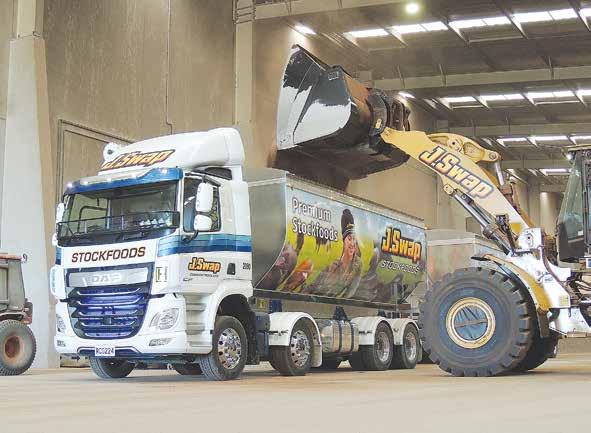
“We at Swaps are in it for the long run and the pricing needs to be sustainable for both us and the farmer.”
a break, how we have a race to the cheapest price on PKE, where companies may be selling at cost or below but making up the difference on other products.
“We at Swaps are in it for the long run and the pricing needs to be sustainable for both us and the farmer – we are both purchasers – and we want to be able to offer the best blend and straight prices without inflating cost on other products. We want to be able to offer great pricing over an average of a season and follow this up with great service.”
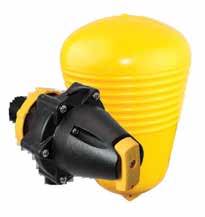
J. Swap Stockfoods have been a key player in the expansion of the dairy feed industry and have the advantage of large storage capacity, a broad range of feed and mineral options, and their own fleet of trucks, which reduces the chances of delivery delays and means farmers only have to deal with one company.
“We are more than a seller,” says Hardman. “We manage and control the full operation. We have the trucks and control the delivery so you don’t run short and we get product to farm when needed.”
•Ideal for Cattle Troughs
•High Flow
•Side/Bottom Mount
•Detach to Clean
•Compact/Robust

JOE HARDMAN is coming back to the industry he really loves, agriculture, after a few years in the police, then a stint in the building industry. His father worked in the ag-feed industry and the family had close ties to farming near his hometown.
Originally from Preston, Lancashire, in the UK, Hardman worked on a local dairy farm there from the age of 13, then later moved onto a high intensity robotic dairy farm, which did three milkings a day and fully fed the cows through in-shed systems – aiming for very high litreage.
He then did about seven years as a bobby in the UK police force, before moving to New Zealand in 2014 with his Kiwi wife, to work on her family’s 300cow dairy farm near Rotorua.
After a four-year stint there, which included building a Bennett Homes house, Bennett Homes offered him a job. He did seven years there, helping expand the business in a sales and management role. He dealt with J. Swap’s civil division while working in housing, so had good contacts with the Swap family.
Now he’s returned to his true passion, the farming industry, as sales manager for J. Swap Stockfoods.


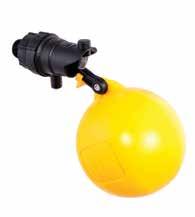
•Ideal for Small/Low Demand Troughs •Low Flow ve/Below Water Mount •Built in Check-Valve
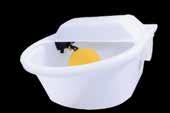


•Ideal for Compartment Troughs/Tanks
•High Flow
•Top Mount
•Detach to Clean
•Compact/Robust
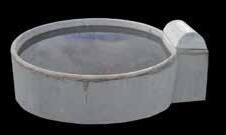
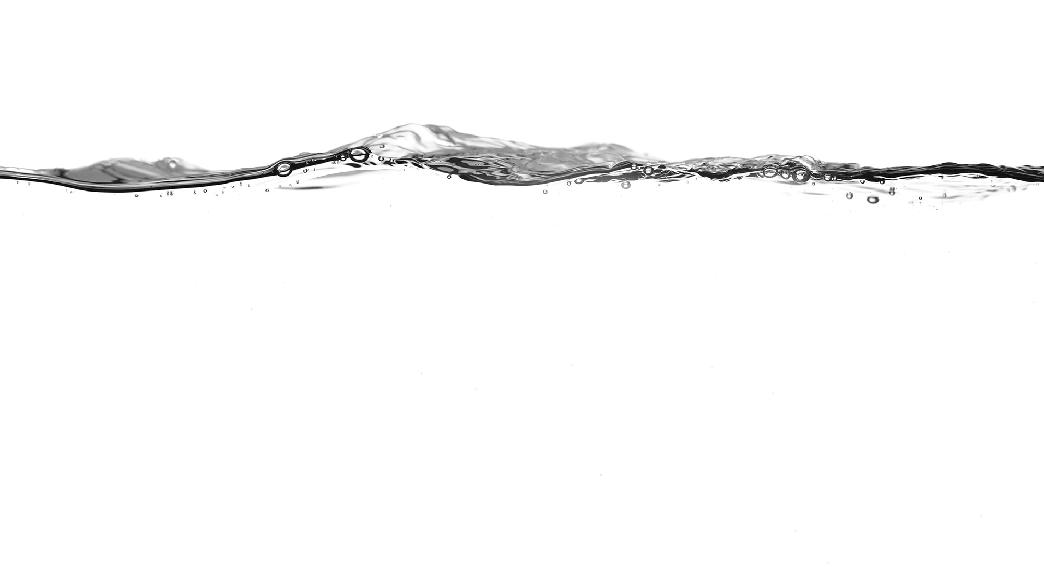

AS I write this article, we have just had our first frost in the Waikato, a change in weather signalling that winter is upon us. This will lead to slower pasture growth rates, and with calving only 10–12 weeks away, many farmers are turning to maize silage as part of their winter-feeding strategy.
While it’s well known for boosting summer and autumn production, maize silage also plays a critical role in winter by helping to build body condition, maintain consistent intakes in poor weather, and support cows through the transition period.
Building Body Condition Score (BCS)
During early winter, the main focus is on BCS. Spring calving cows should now be on a planned nutritional path to achieve BCS targets of 5.5 for younger cows and 5.0 for mature cows.
For cows due to calve around mid-July, the window for condition gain typically begins in April and May. From midMay, a 475kg cow will need to consume around 10 kgDM/day, increasing to 11 kgDM/day by midJune as pregnancy pro-
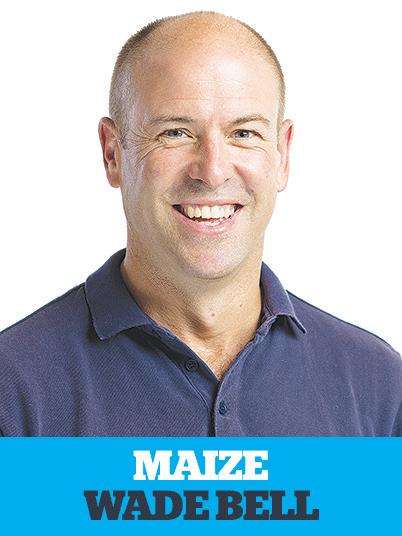
gresses and maintenance demands increase.
When you factor in feed utilisation2, this means dry cows should be offered 12–14 kgDM/ day to meet their requirements. In most regions, winter pasture growth rates are modest, and even under favourable conditions, pasture might only supply half of the daily demand. That leaves a gap, which is where maize silage can play a role by providing a consistent energy source to drive efficient BCS gain over the winter months.
Maintaining intake when conditions change
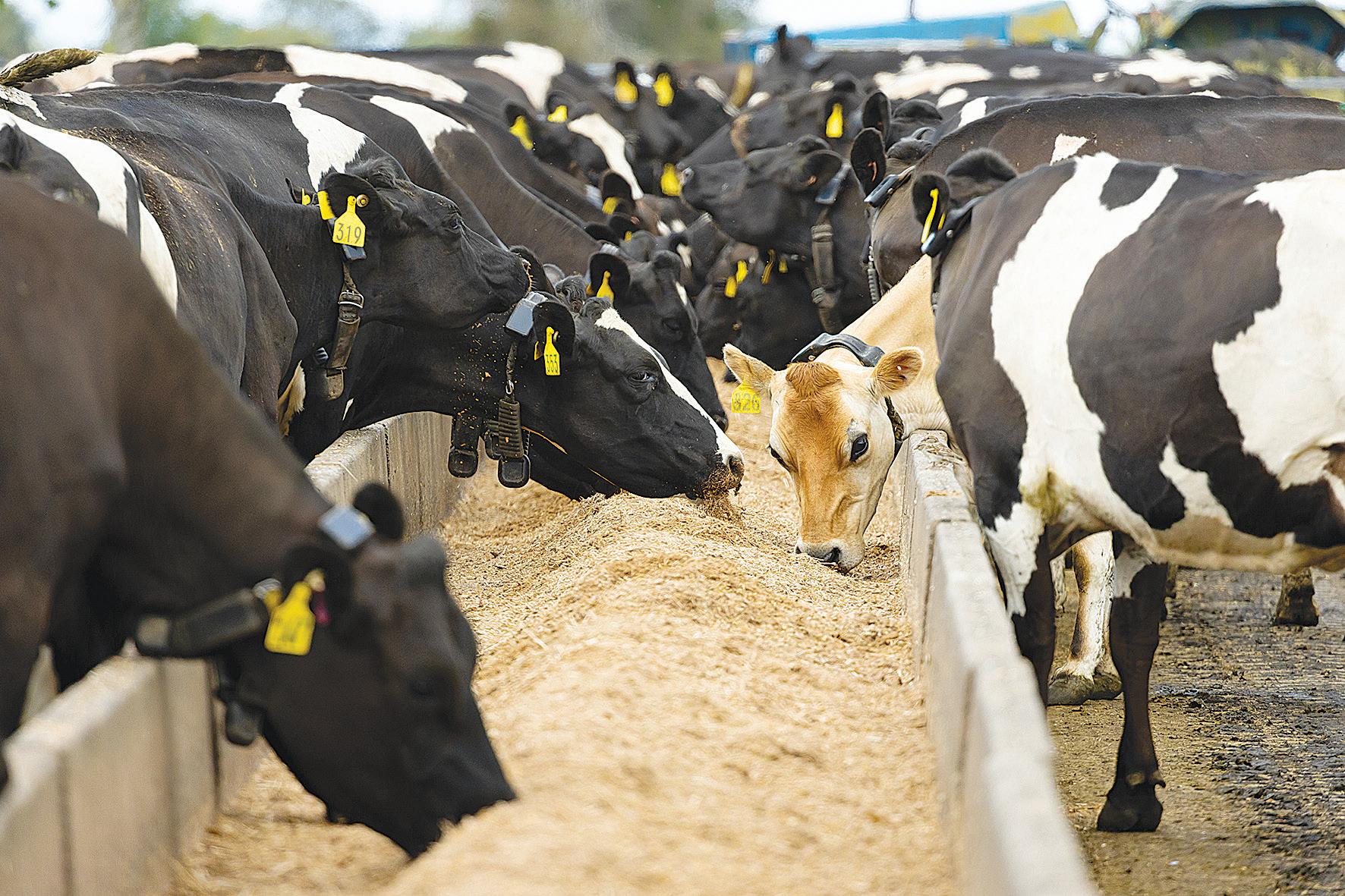
One of the key advantages of incorporating maize silage in winter diets is the ability to maintain drymatter intake when pasture utilisation drops due to poor weather. In good winter grazing conditions, pasture might be utilised at around 80%, but in wet, cold, or muddy conditions, this can easily fall to 70% or lower.
1 illustrates how maize silage offers flexibility in this situation.
On a good day, cows may comfortably meet intake targets with 7 kgDM of pasture and 4 kgDM of maize silage to reach an 11 kgDM per cow intake. However, when pasture utilisation drops, the pasture component provides less actual intake, meaning cows fall short of
their needs unless additional supplement is introduced.
During poor weather conditions, increasing the amount of maize silage offered by just 1 kgDM ensures that total intake is restored to the target level. Because maize silage is fed in winter on a feedpad, the feeding rate is easy to adjust and less vulnerable to
weather-driven losses.
This flexibility helps maintain a consistent energy supply when cows need it most.
This approach ensures feed consistency, helps avoid intake dips, and supports continuous progress toward achieving BCS targets.
Transition feeding and DCAD management
Maize silage also brings significant benefits during the springer period (3 weeks pre-calving). Its low potassium and naturally low DCAD (Dietary Cation-Anion Difference) make it an ideal base for pre-calving diets, particularly when compared to high-potassium pasture (especially from effluent paddocks).
Feeding low-DCAD diets 2–3 weeks before calving improves calcium mobilisation and reduces the risk of milk fever.
Maize silage also keeps dietary calcium levels low
(<0.5% of DMI), which helps regulate calcium absorption. Once lactation begins and demand skyrockets, cows are better primed to absorb calcium from the diet.
To fully unlock these benefits, it’s important to test feed components and complement the diet with appropriate anionic mineral supplements such as magnesium chloride or sulphate. Your vet or nutritionist can help set appropriate DCAD targets and ensure overall diet balance during this crucial phase.
If you’d like support with feed budgeting, mineral balancing, or getting the most from your maize silage this winter, talk to your nutritionist, vet, or one of the Farm Systems Specialists at pioneer.co.nz. • Wade Bell is Genetic Technologies farm systems manager. Contact him at wbell@genetic.co.nz

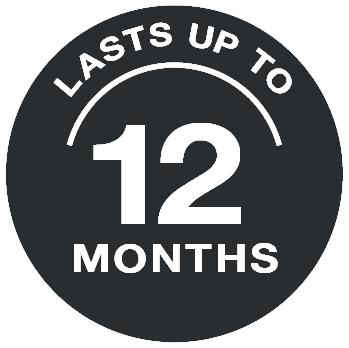




WELL KNOWN for its dominance in the harvesting arena, Claas has channelled its engineering excellence and a deep knowledge of the ag industry with the Fieldays release of the 2025 facelift Claas Arion 600C Evolution and Claas Night Edition Arion 660 tractors.
use, including a refined transmission, ergonomic controls, advanced fuelsaving technologies and smart farming integrations.
The Night Edition is more than a limited-edition statement, featuring a striking greyed-out exterior, enhanced LED lighting systems and cab upgrades, to deliver improved visibility, comfort and control.

ebrated Disco’s success with the 250,000th mower – a model 3200 FC – rolling off the production line in Bad Saulgau, Germany. Disco mowers offer the cleanest cuts at high speeds, ensuring optimal forage quality.
Visit the Claas Harvest Centre display at site V5. MARK
The new Claas Evolution series is designed to work smarter, featuring redesigns for greater versatility and ease of
Pasture preparation might signal the right time to upgrade, or pair your tractor with a new implement from either
our Amazone spraying and seeding equipment range, or with a Claas disc mower.
Amazone’s ZA-M
mounted spreaders, offer hopper capacities up to 1,500 litres and spreading widths of 10-36 metres, placing great empha-
sis on safety and reliability. Key features include slow-turning, heavy-duty agitators to maintain a constant feed and the
low disc speeds ensure an even flow, while protecting the integrity of the fertiliser granules. Claas recently cel-
THIS YEAR, the Fieldays Tractor Pull, in association with PTS Logistics, mark a major milestone – 50 years of crowd-thrilling competition, after a modest contest started in 1975 with two-wheel drive tractors and manual gearboxes.
For long-time competitor and organiser Daniel Reymer, who has been involved in the competition for over a decade, The Tractor Pull is more than a sport – it’s a family tradition.
His father and uncles were among the early competitors in the ‘80s
and ‘90s, with Dan’s father, Stephen Reymer, claiming victory in the late 1980s, and three Reymer brothers once famously sweeping the podium at one event, taking home first, second, and third places.
“These were two-wheel-drive tractors, some without cabs — it was a very different set of rules back then,” Dan says, reflecting on how the sport has evolved.
Dan has been involved since before he could legally drive and competing ever since. This year, Dan is hoping his new Case IH Puma 240
might be the game-changer, after narrowly missing out on the top spot in recent years, twice placing second in the weight-adjusted category.
The competition attracts farmers, contractors, and mechanics, with two different competitions.
The weight-adjusted competition sees two tractors with a concrete weight being towed, in a race to the finish line, with the emphasis on driver skill, rather than on a tractor’s power.
In the weight transfer competition, the tractor is driven down a
specially prepared track for a far as possible, as weight is gradually added to the tractor-mounted competition sledge. Other categories include modified tractors and tractors manufactured before 1985.
“The modified tractors are always a crowd favourite,” says NZNFS venue operations manager Marie Rechner, who has helped coordinate the event for the past six years.
“The engines roar, the smoke pours, and you’ll often see the front wheels lift right off the ground. It’s loud and the crowds line the bank;
Using correctly set front and rear mowers with the Active Float hydraulic suspension ensures ground contour following and avoids soil contamination.
@dairy_news
facebook.com/dairynews
they love every second of it.”
This year’s event has attracted strong entry numbers, with competitors from as far afield as Taranaki, Reporoa, and the South Island, looking to drive away with up to $5,000 in prize money.
Helping to power this year’s golden anniversary celebration is new Major Sponsor PTS Logistics, who joining returning sponsors, Corson Maize and Giltrap AgriZone. Heats take place during Wednesday through Friday with the Grand Final on Saturday, from 8am to 1:30pm.
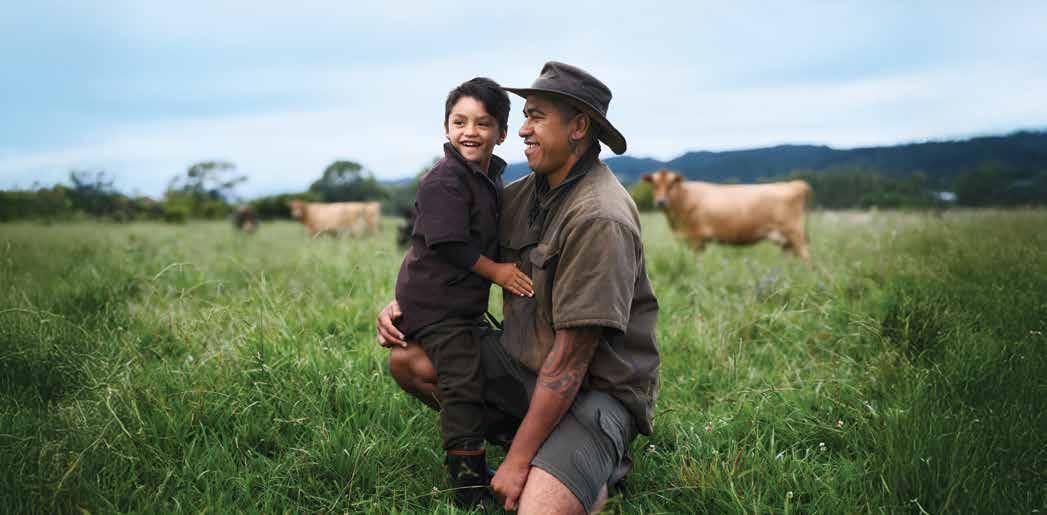
For generations, your Co-op has been built on a commitment to shared best interests. Over the years, this history has helped grow your Co-op to support the New Zealand economy and make us all proud. It’s your milk. Your history. Your Co-op.
MARK DANIEL markd@ruralnews.co.nz
AVAILABLE AS part of the Lemken portfolio, a leading name in advanced seeding technology, Equalizer, sees its CII 8/762N Planter arrive in the New Zealand marketplace via Lemken dealers.
Constructed with high-strength steel, the 2-section vertical fold frame and row units are built to endure harsh environments, deliver consistency and reliability when it matters most.
The robust 8-row conventional planter features a 762mm row spacing, making it ideal for crops such as maize, sunflower, and soybeans, particularly under moderate no-till or unprepared soil conditions.
The unique disc opener system, featuring a leading and trailing configuration, is said to ensure smoother running, with minimal soil disturbance.
Thanks to a small disc angle, the
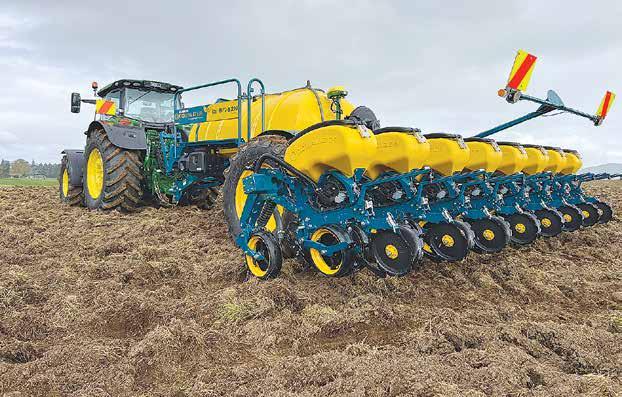
discs, helps improve floatation and ensures effective disc cleaning with integrated scrapers.
For flexibility, the machine is equipped with a separate fertiliser coulter and gauge wheel, allowing for precise fertiliser placement 50mm (2”) to the side of the seed row.
Fitted with Precision Planting technology as standard, the 3-bin, on-frame tank-offering a total volume of 4,750 litres, allows the application of up to three different, liquid or dry products, making it adaptable to a wide range of fertiliser strategies.
Its large wheels provide excellent ground clearance and flotation, while the high-lifting frame enables easy access to components for standing maintenance, so no more kneeling in the dirt.
For transport and storage, the CII folds down to a minimum width and height of 3.5m, ensuring compliance with road regulations and ease of mobility.
Visit sites C15 & C17 at Fieldays.
SIR DAVID Fagan, worldrenowned competitive sheep shearer with 642 shearing titles worldwide and a knighthood to his name, now runs beef and dairy operations near Te Kuiti with wife Wendy and son Jack.
Farming in the region brings its share of challenges, especially the unpredictable climate, extended droughts and hilly terrain.
In light of these challenges, Sir David relies on a fleet of Can-Am side-by-sides, including a XMR Defender HD10, a Defender HD10 and an
XT Defender HD10 Limited.
Having discovered the Can-Am brand after being encouraged by his local dealer to take a Defender test drive, Sir David was impressed by the superior design and performance of the Can-Am side-by-side, allowing himself and his family to get necessary tasks done around the farm, from carrying equipment to moving stock.
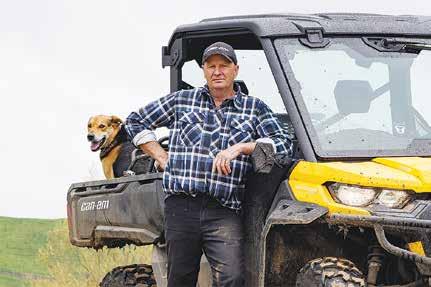
The enclosed cab ensures that everyone stays warm and dry during the area’s cold winters. And ever practical, Sir David keeps a toolbox
and a selection of tools under the front seat for any maintenance jobs


around the farms.
The Visco-Lok autolocking front differential,
which is customisable for different terrains, helps maintain control in slippery or uneven conditions on his undulating property.
Performance is also important, and Sir David knows the Can-Am Defenders are more than capable of handling any tasks in tough New Zealand conditions and can be relied on.
Recognising the importance of regular maintenance and valuing the relationship he has with his local dealer, he appreciates the fact that the 200-hour service
intervals mean there’s less down time between visits.
“Once you try a CanAm, you don’t go back,” says Sir David, who is optimistic about the future of farming, citing the essential role farmers play in food production and New Zealand’s agricultural exports.
Sir David Fagan is a rural ambassador of Can-Am and will be appearing on Can-Am’s Fieldays site (G66-68) throughout the event.
– Mark Daniel
@dairy_news
facebook.com/dairynews



